
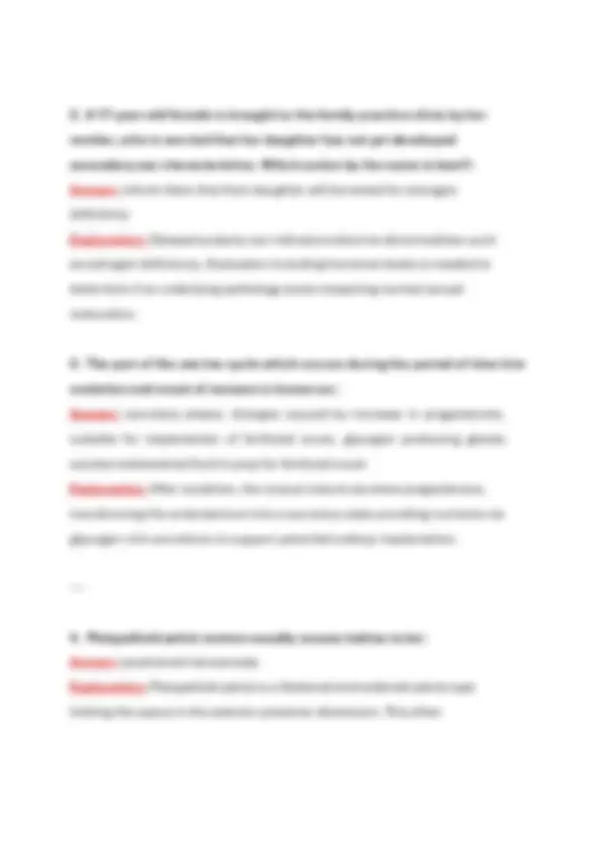
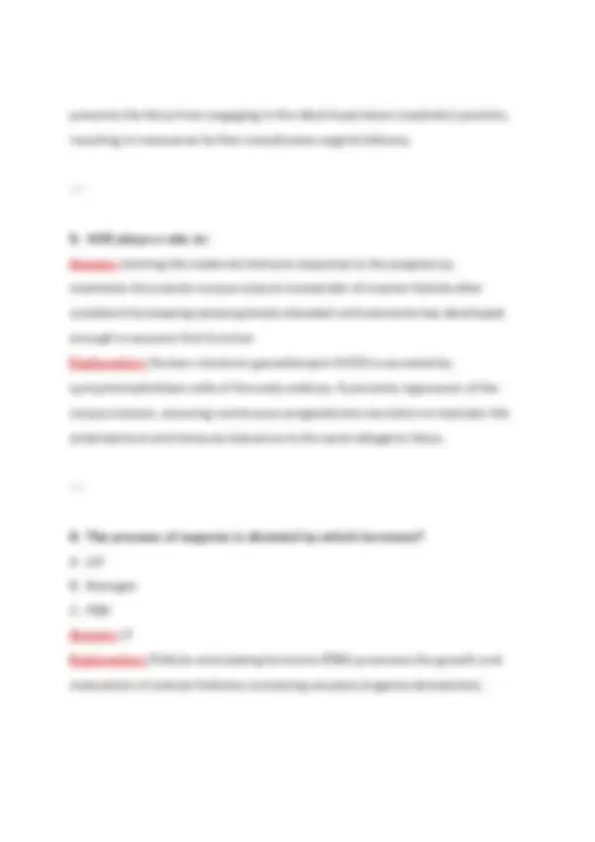
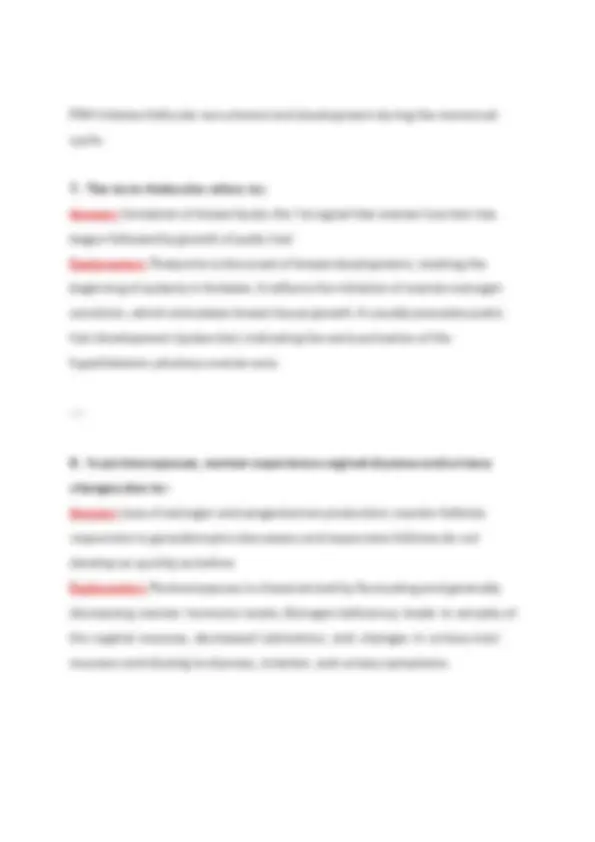
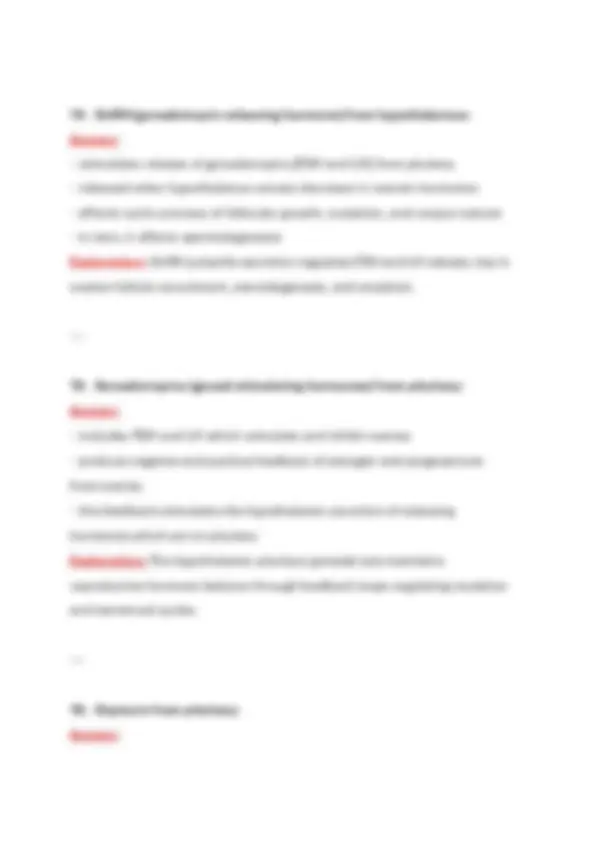
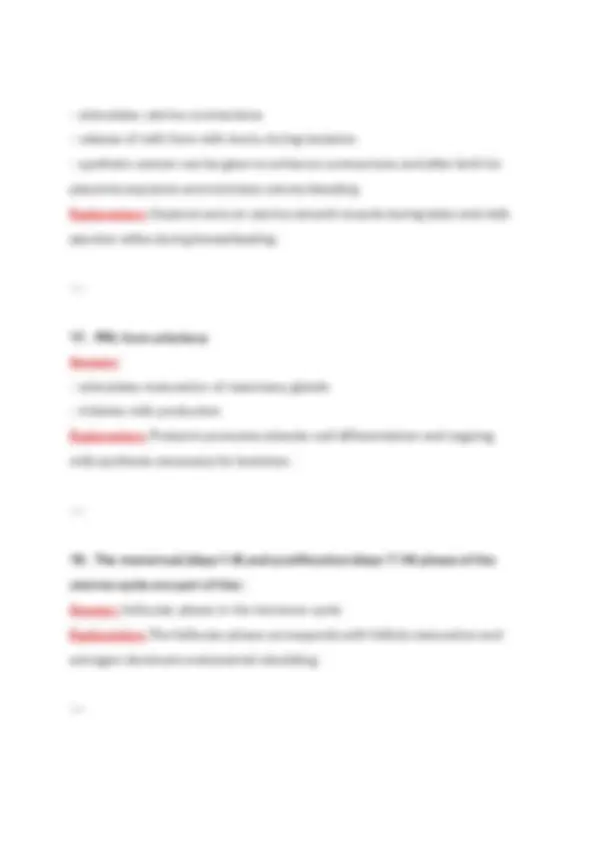
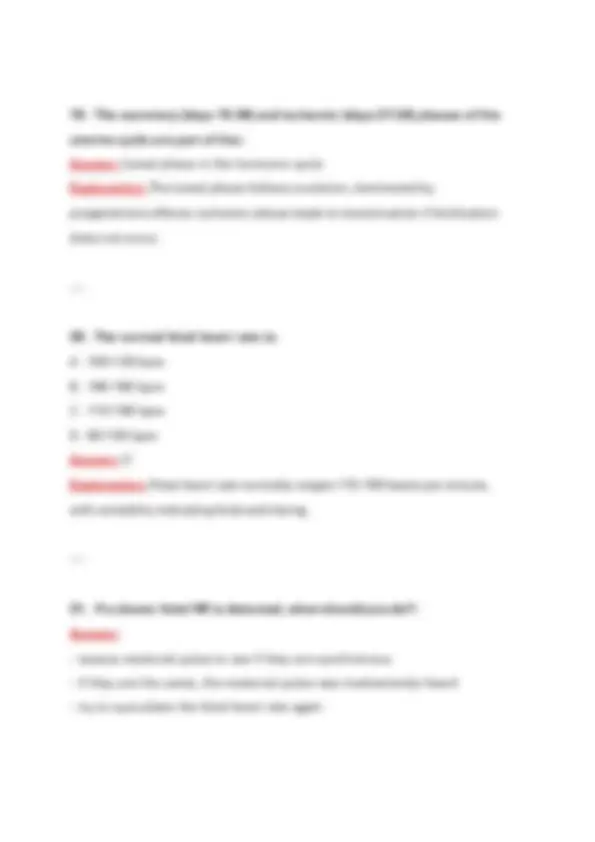
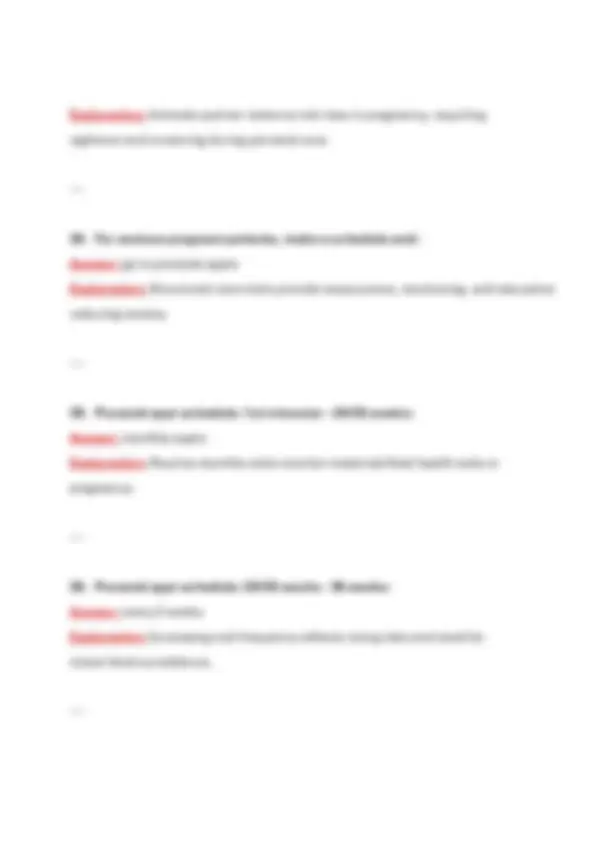
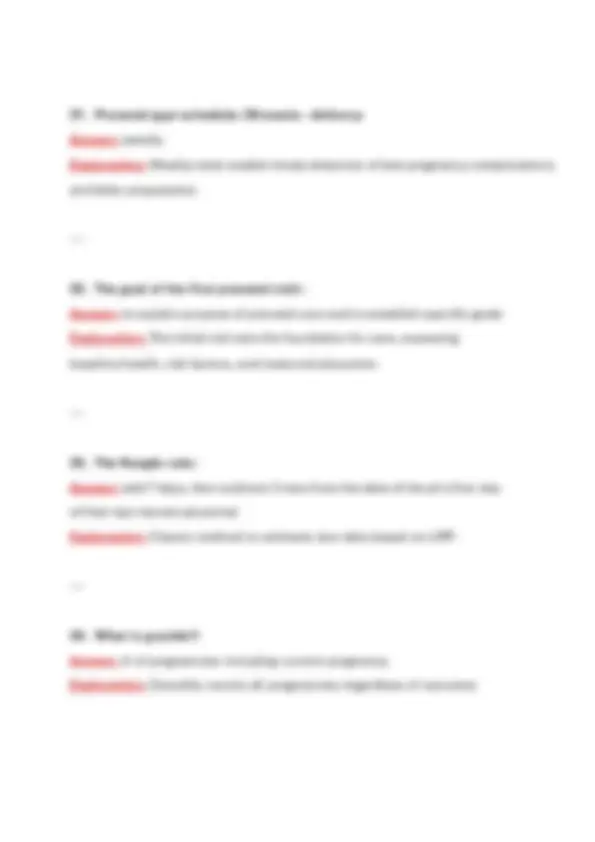
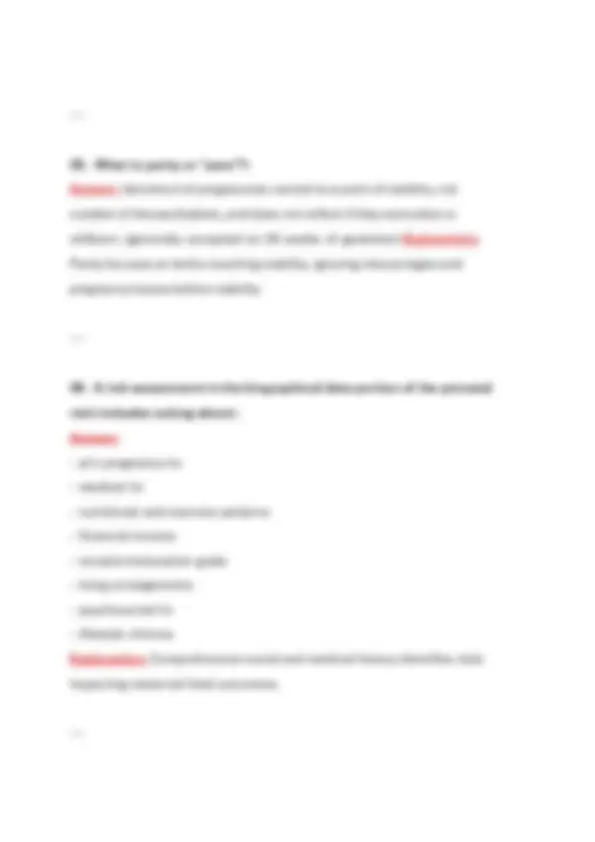
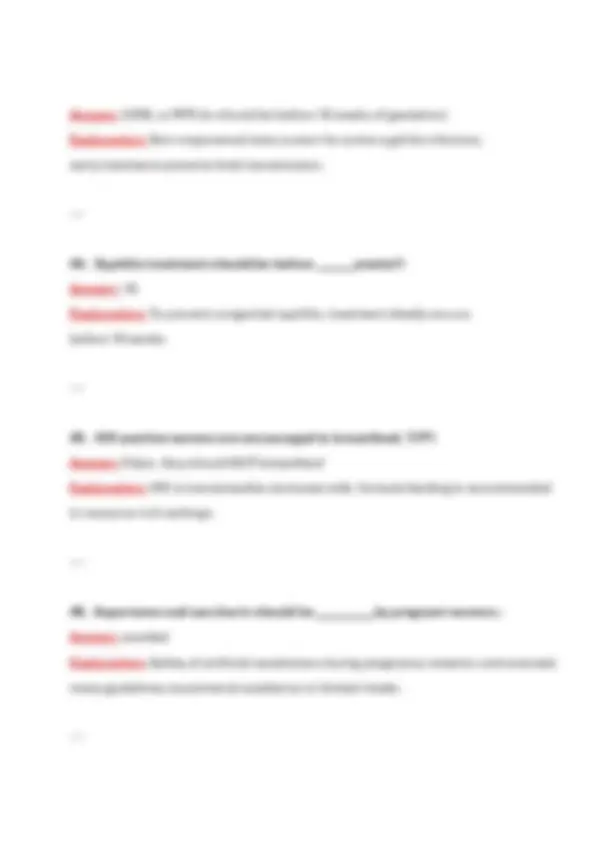
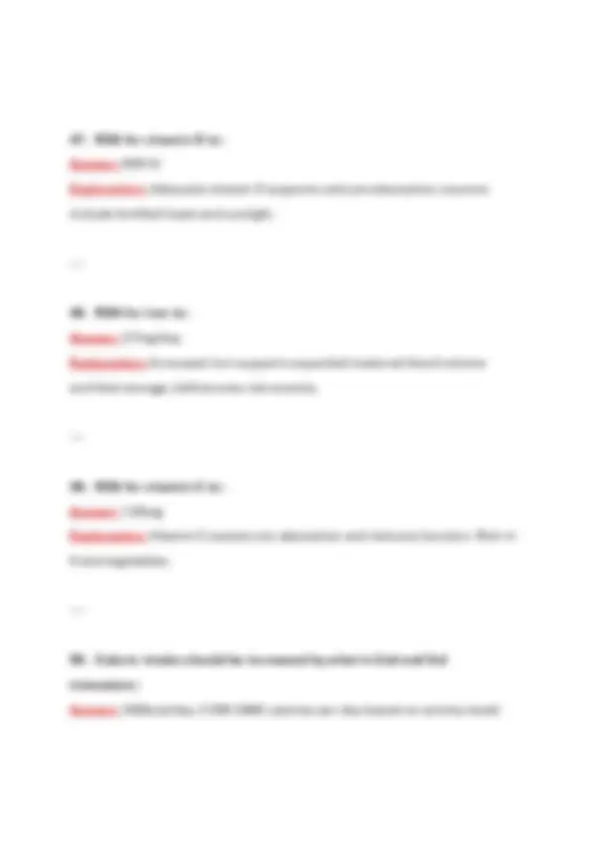
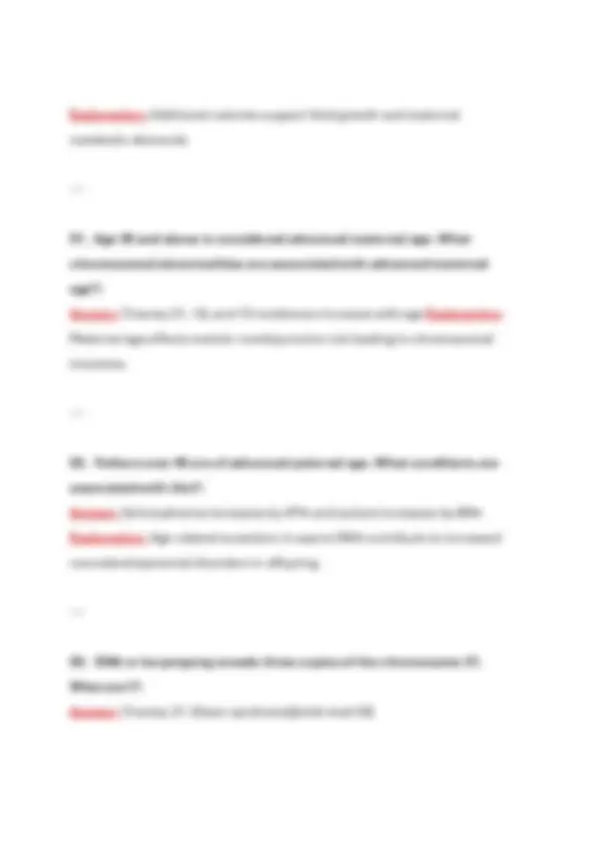
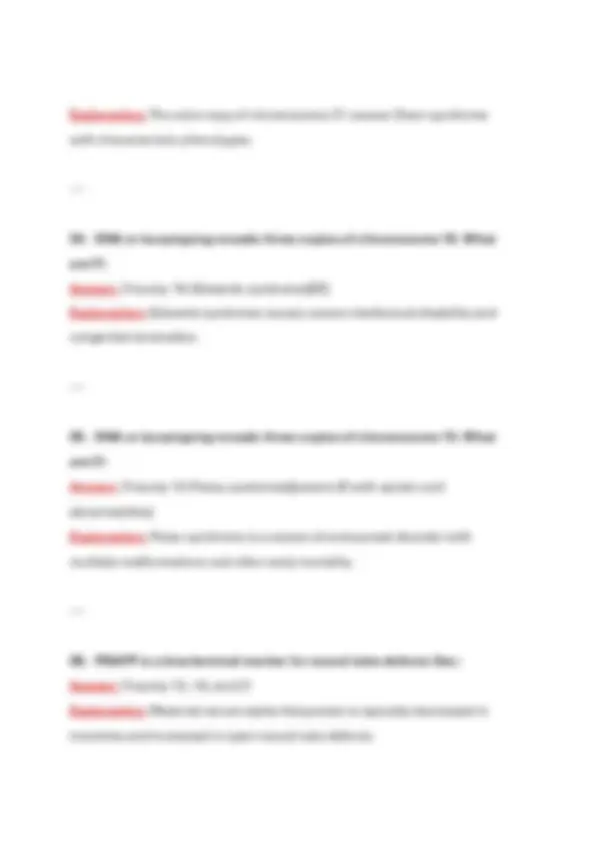
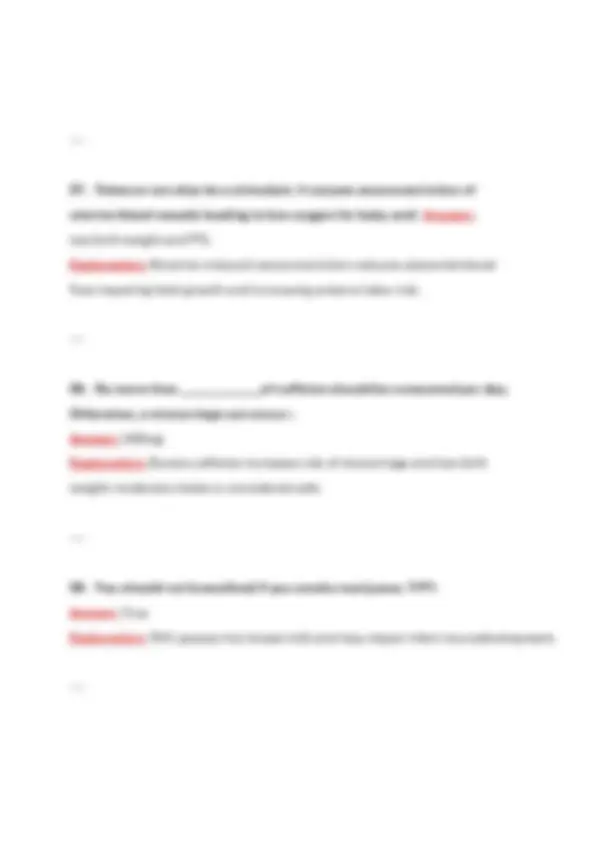
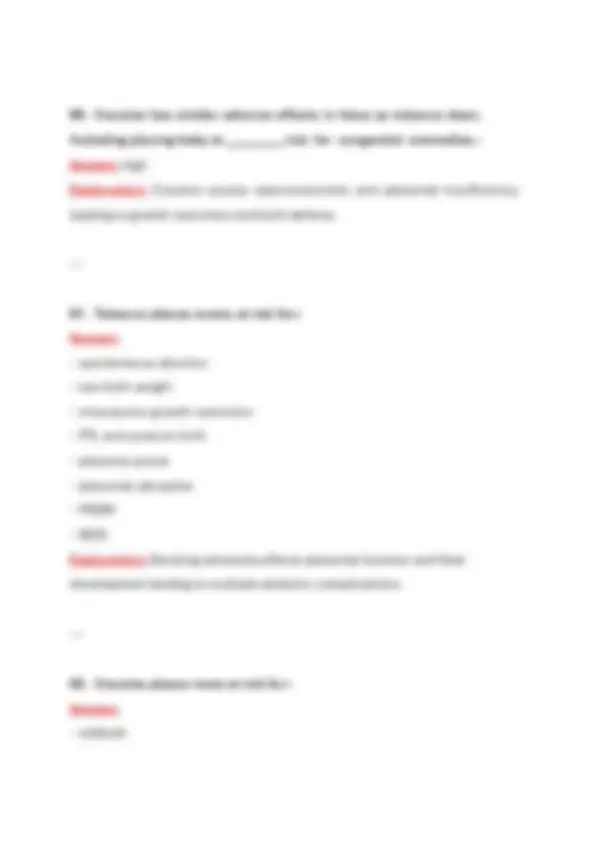
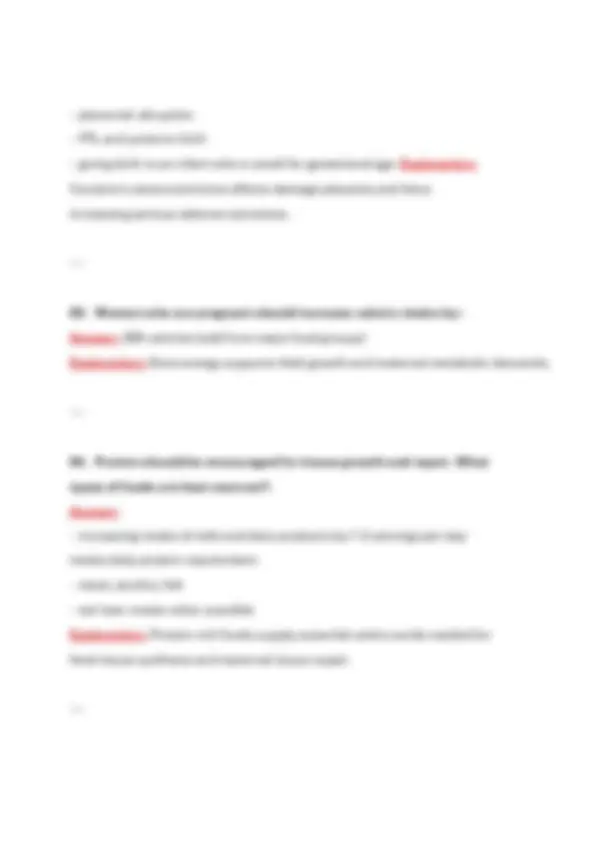
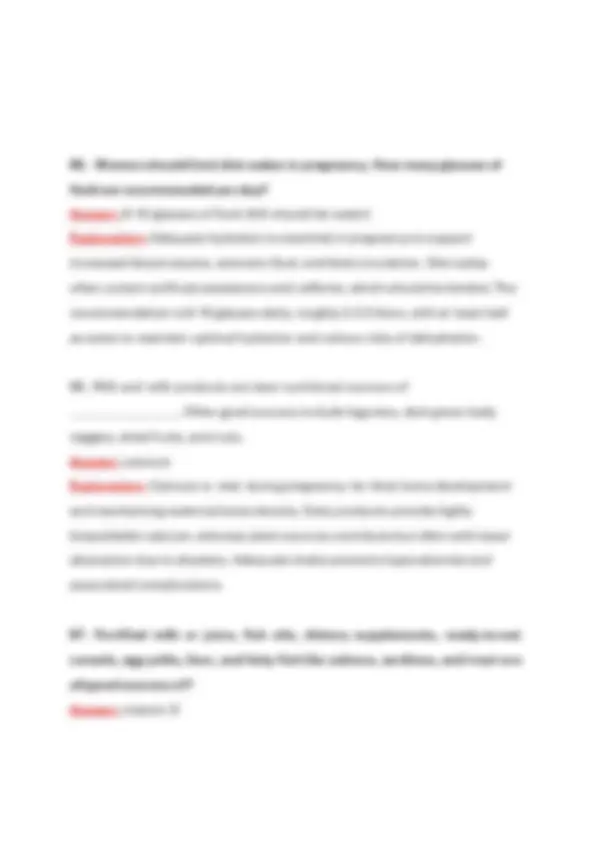
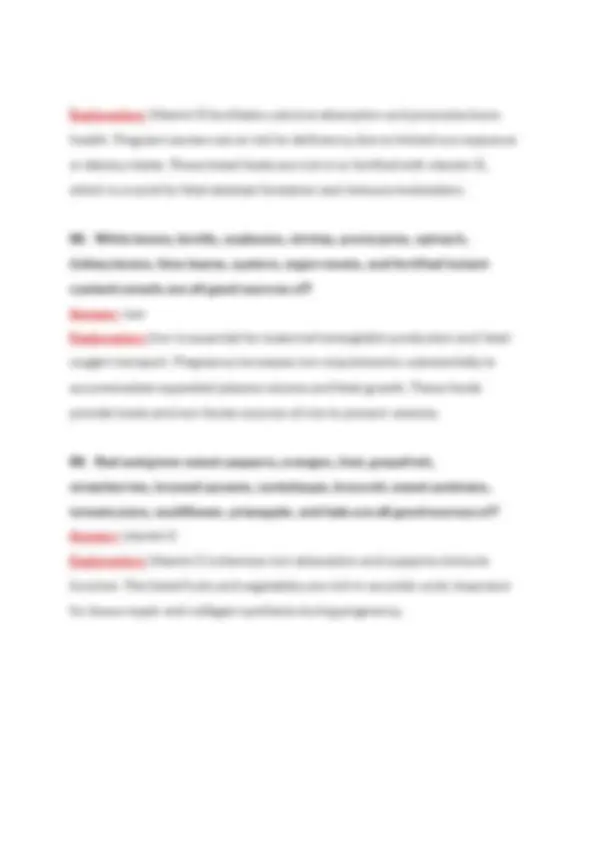
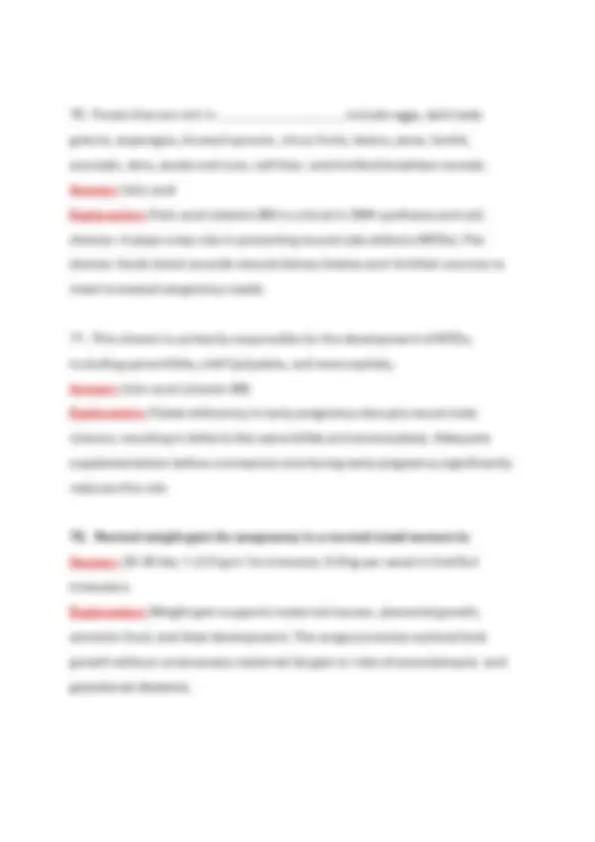
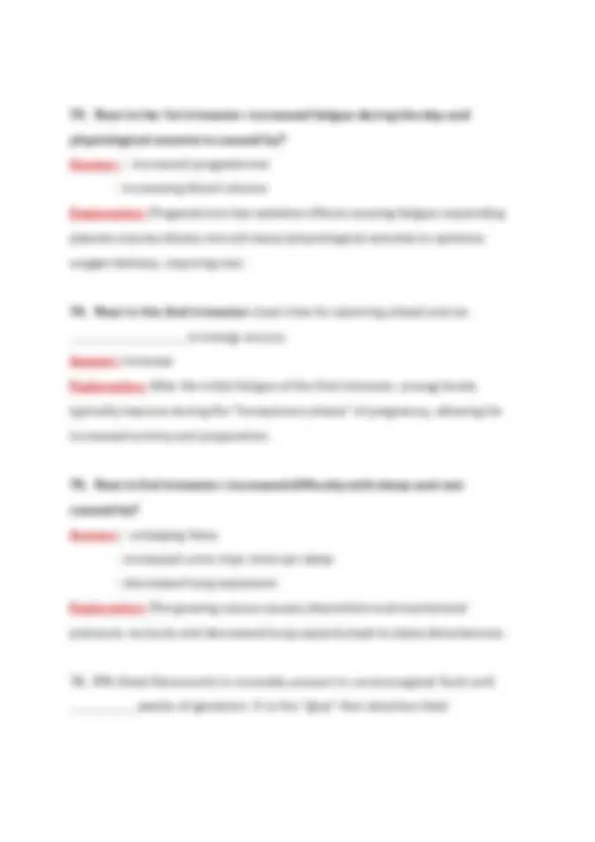
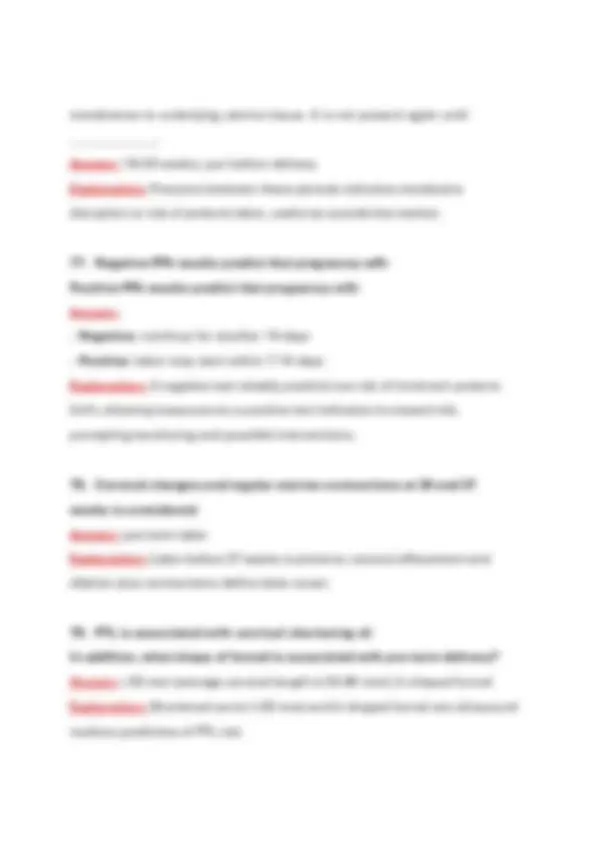
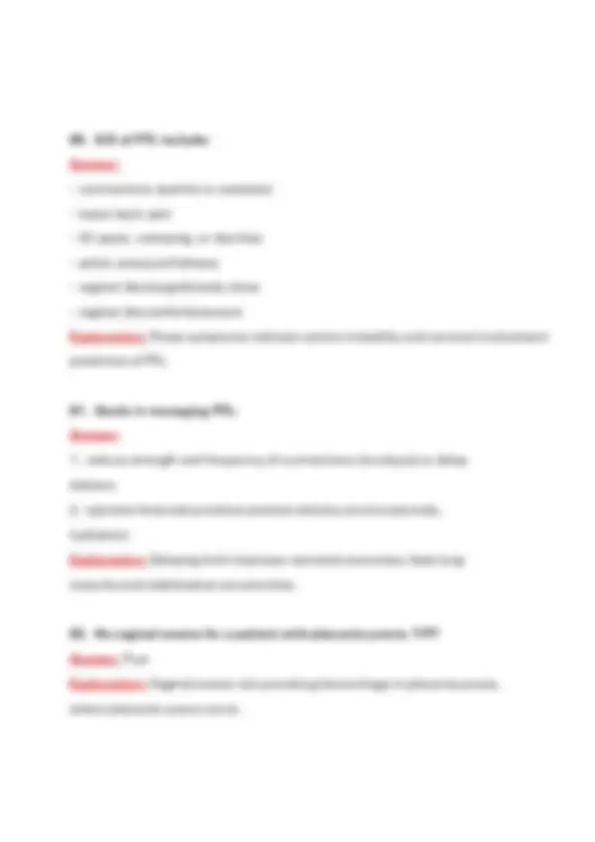
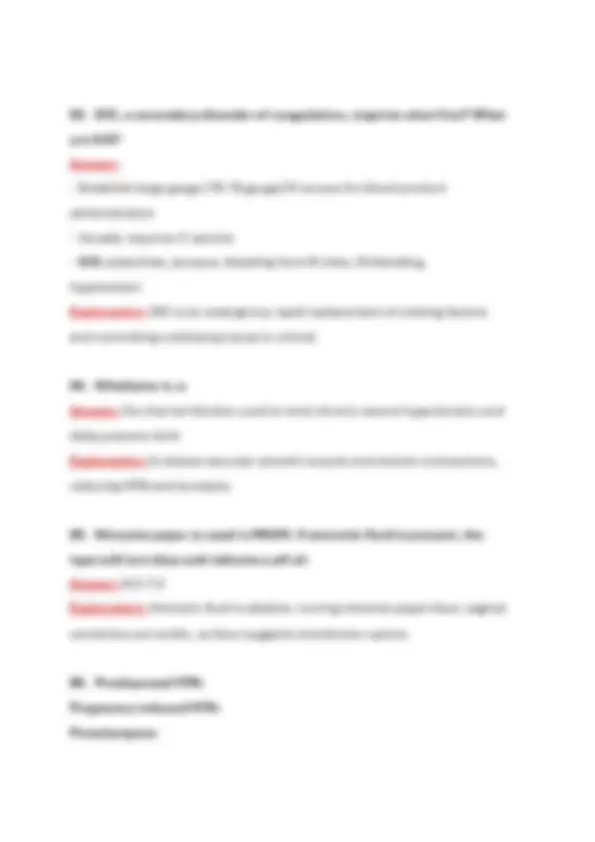
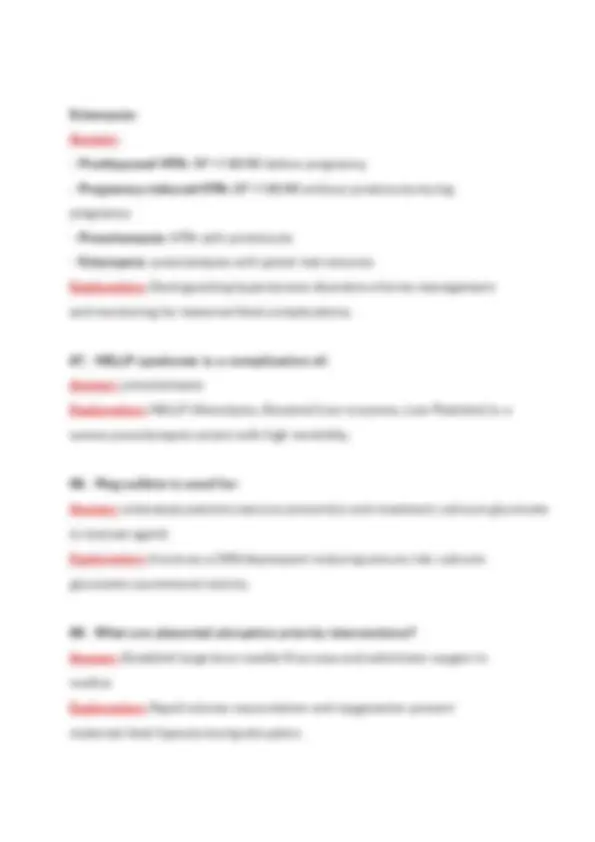
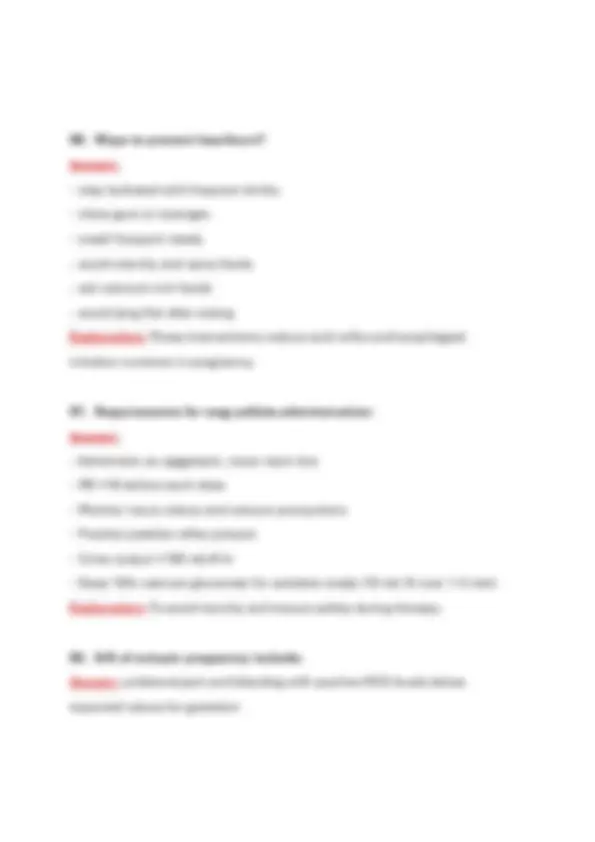
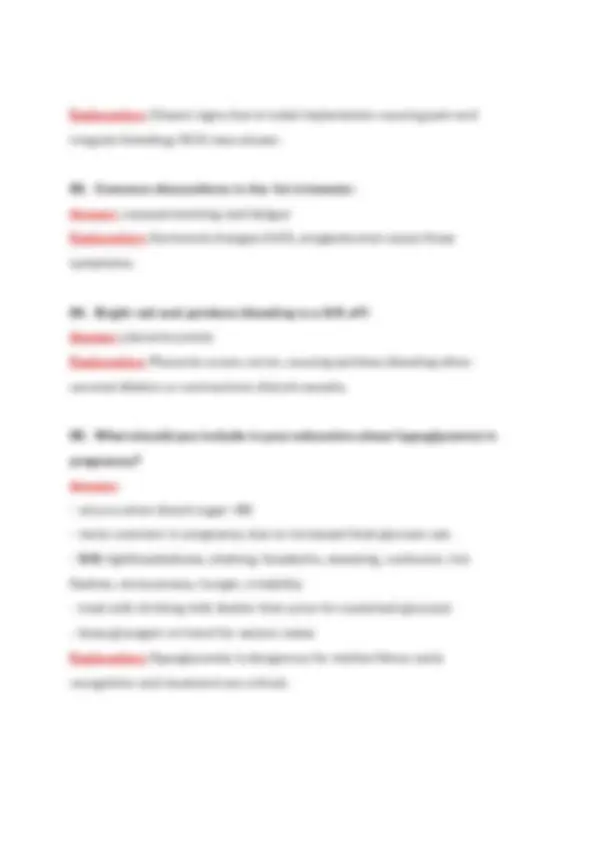
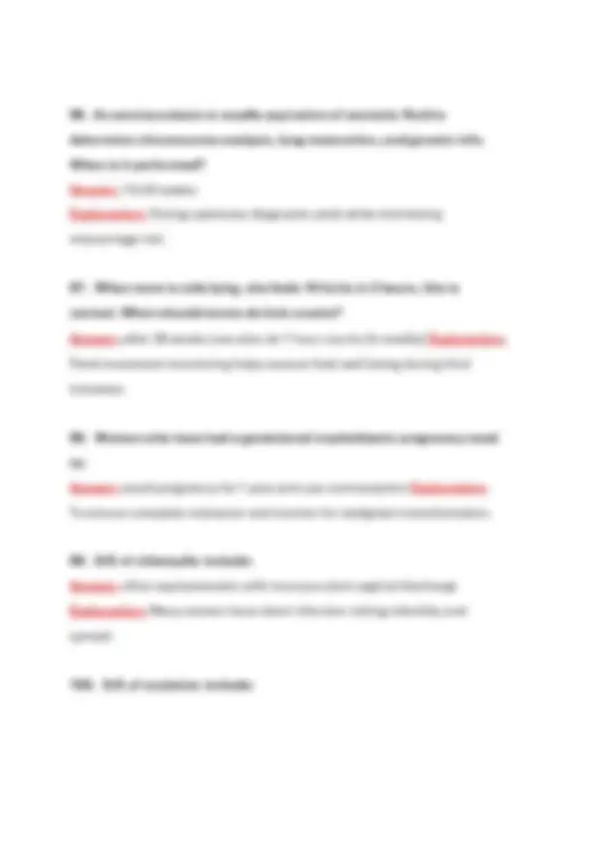
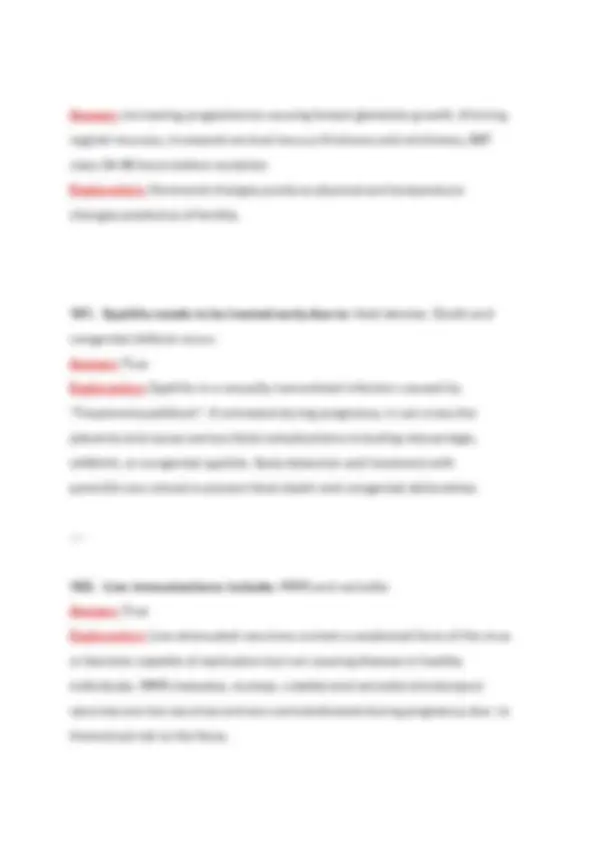
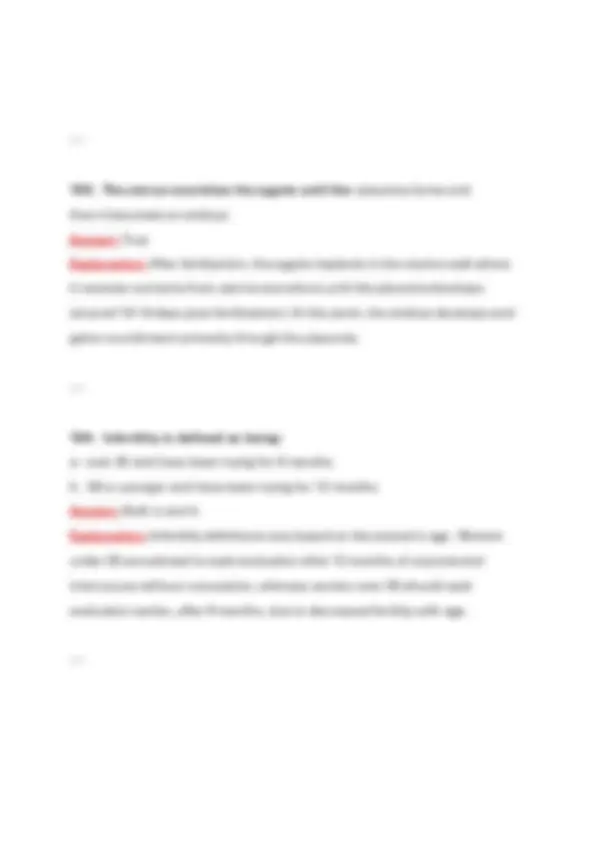
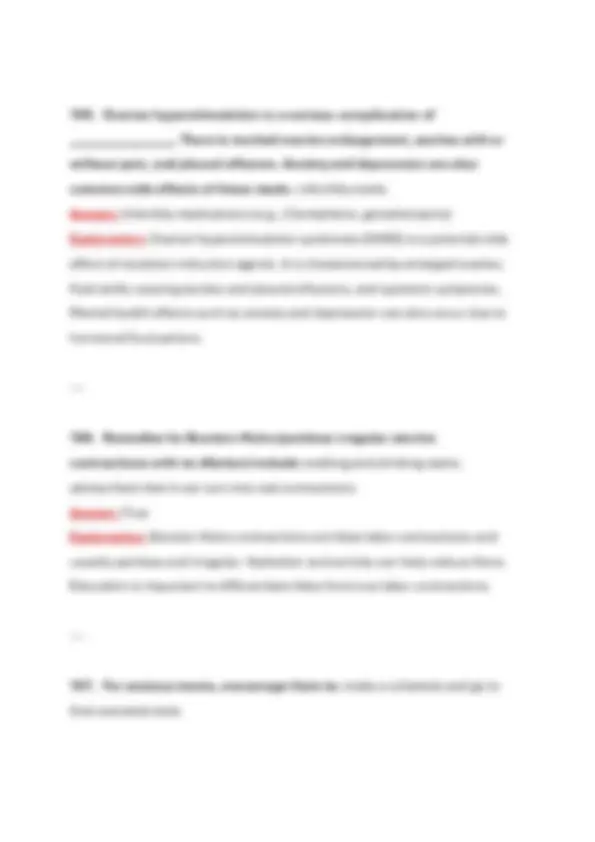
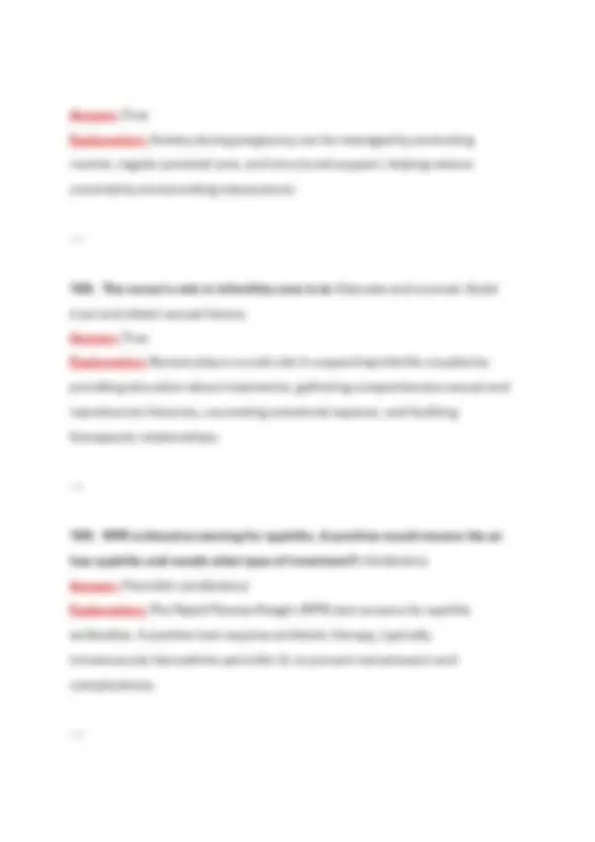
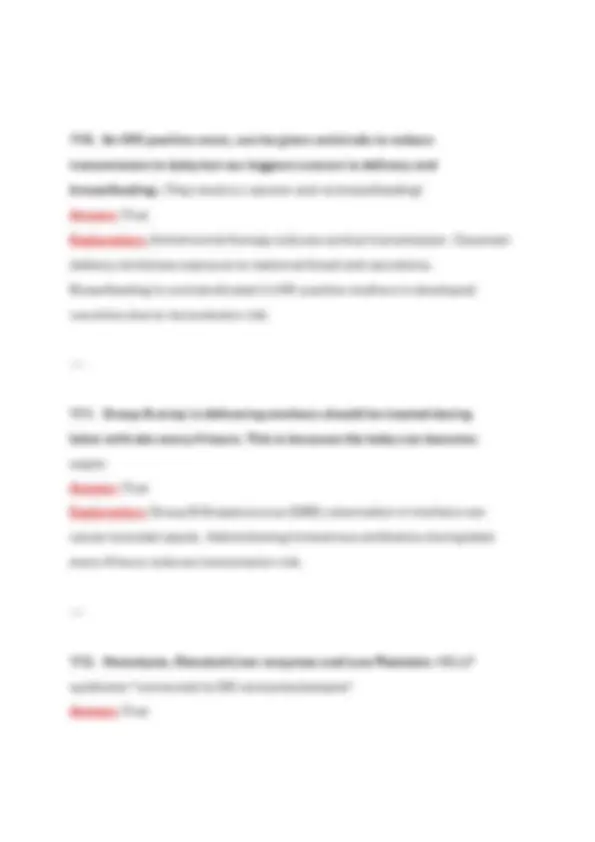
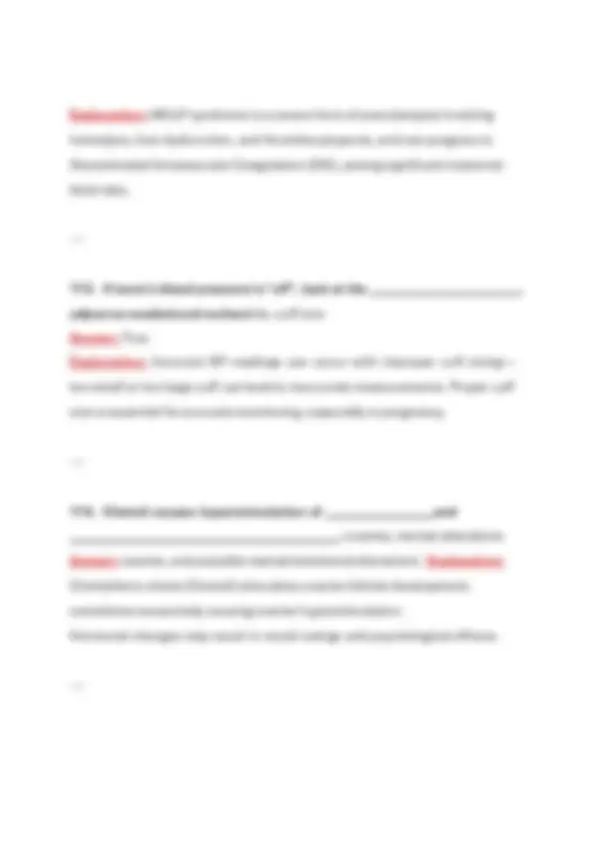
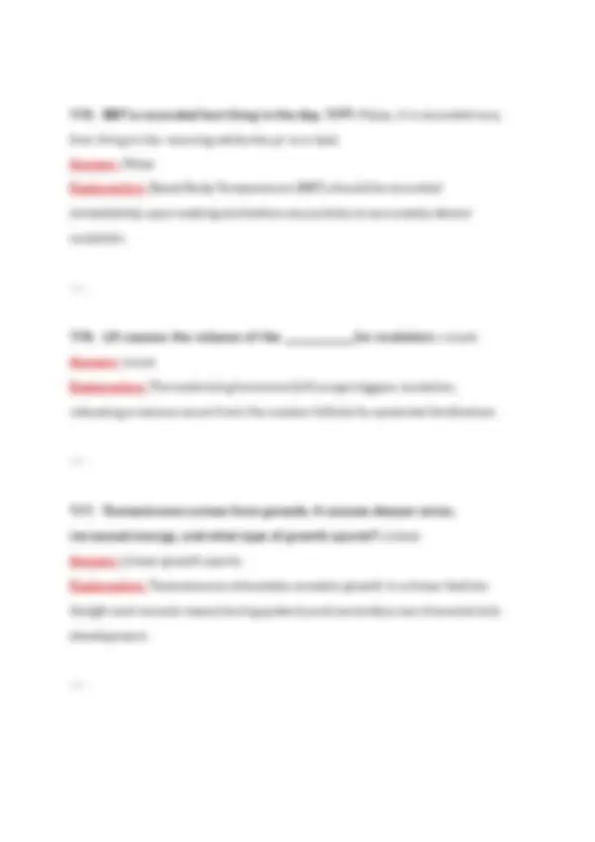
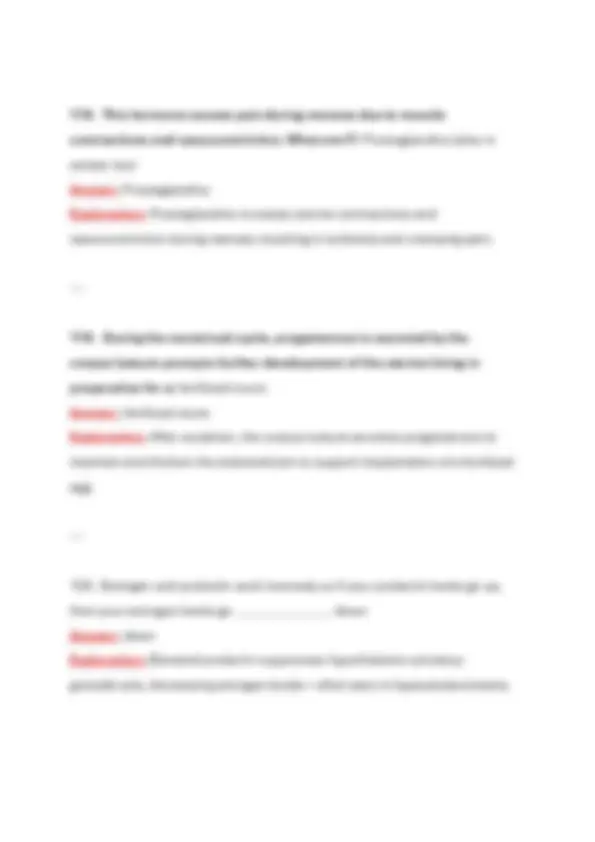

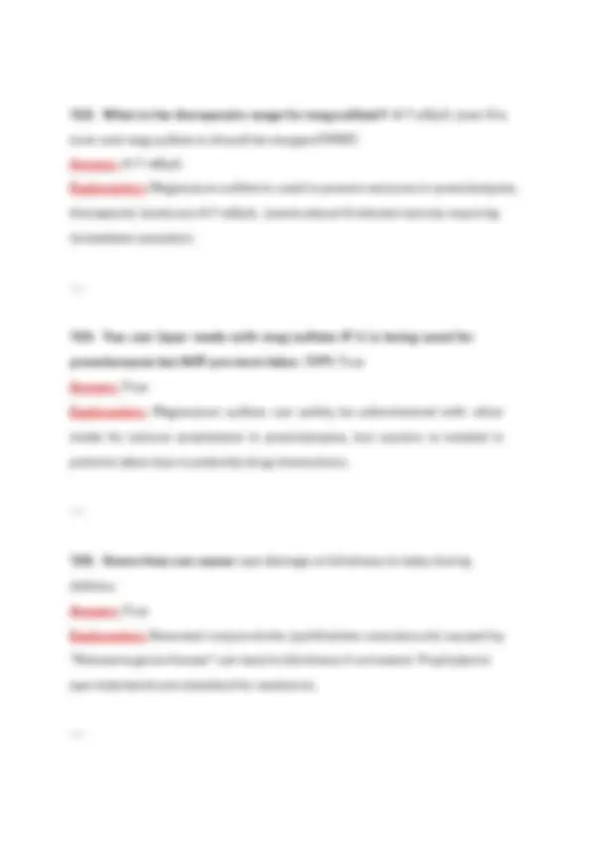

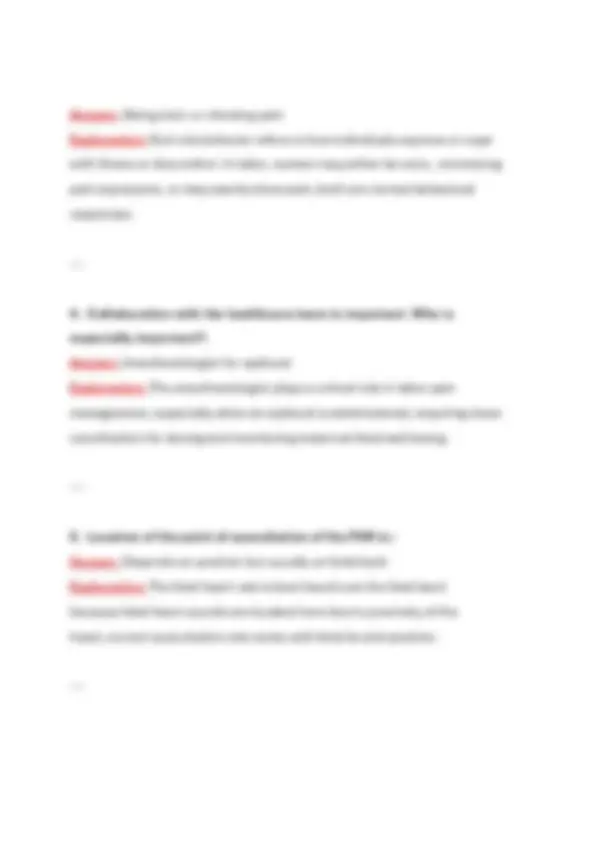
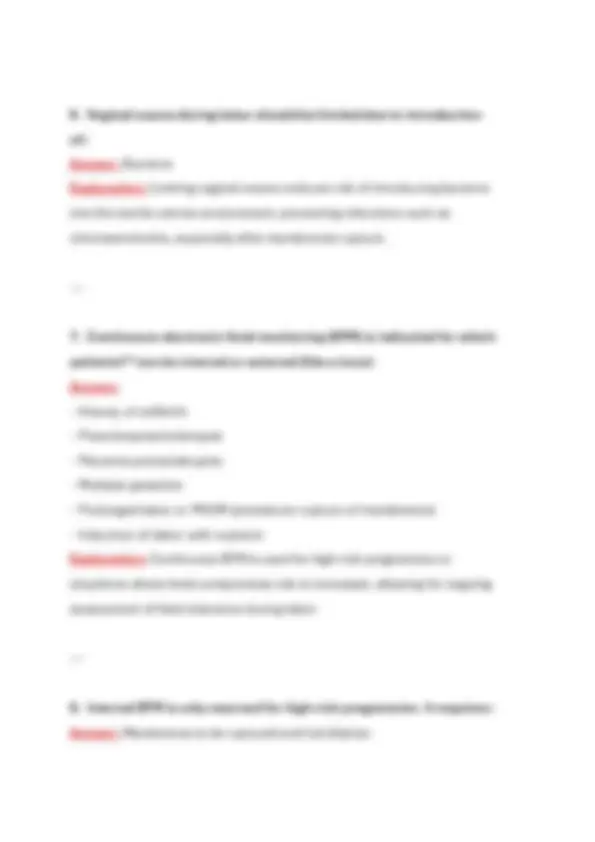
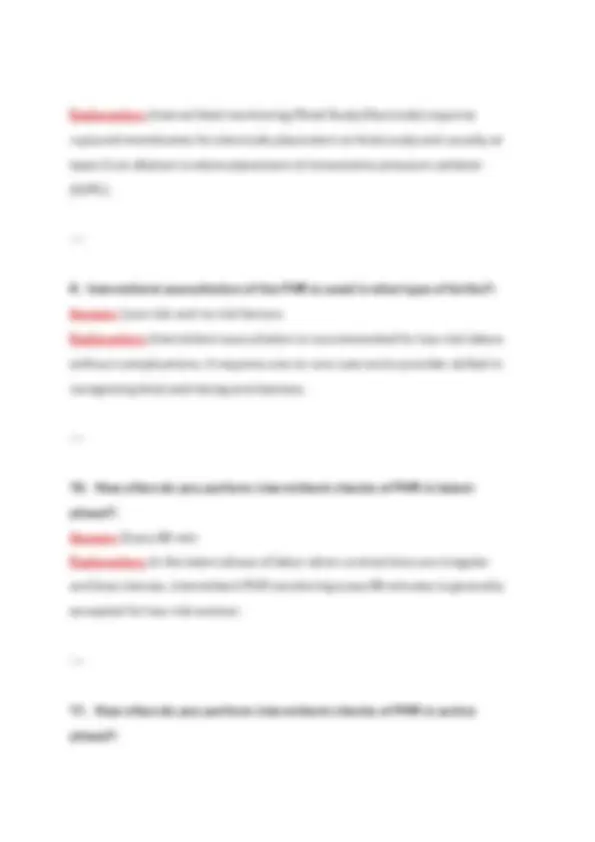
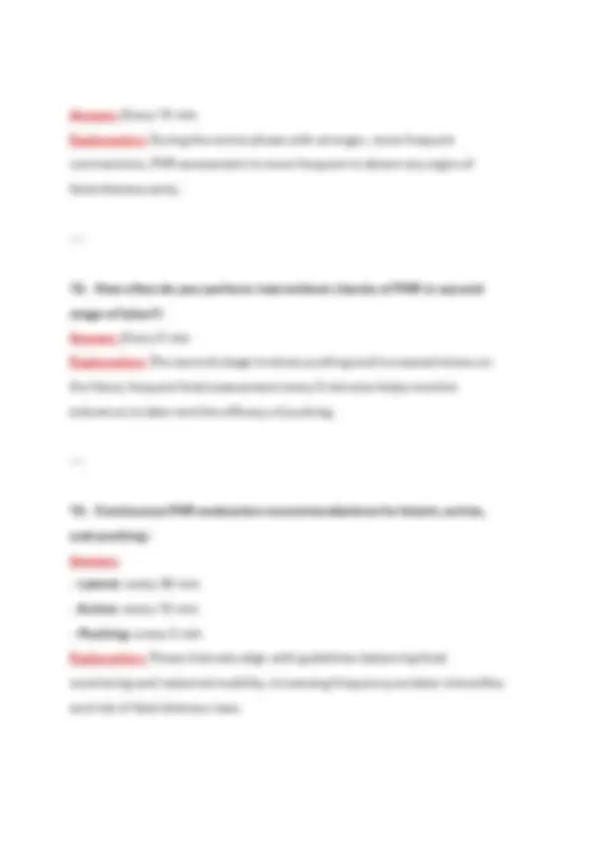
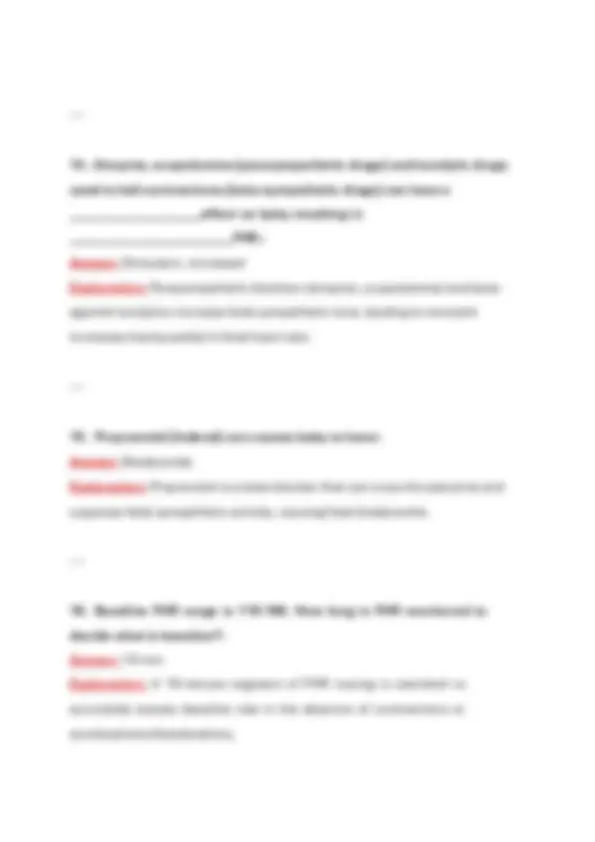
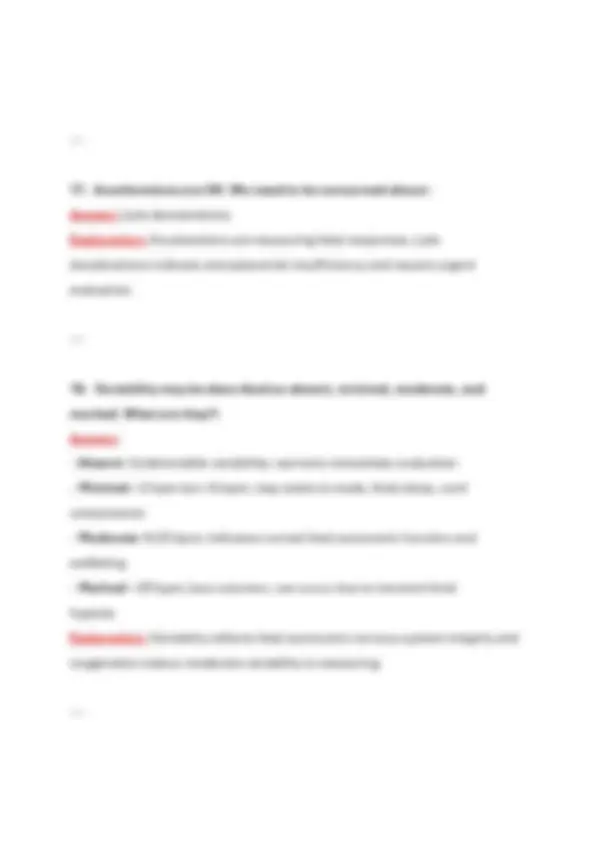
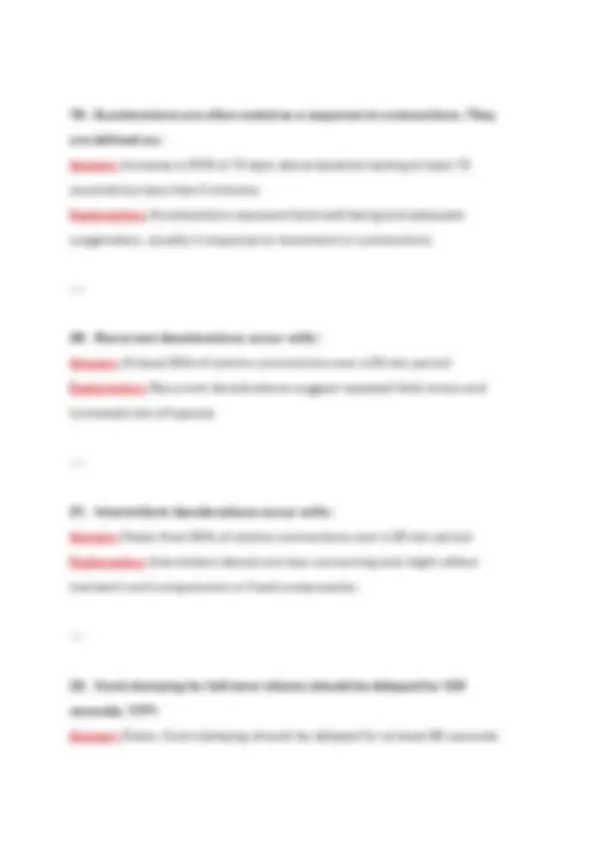
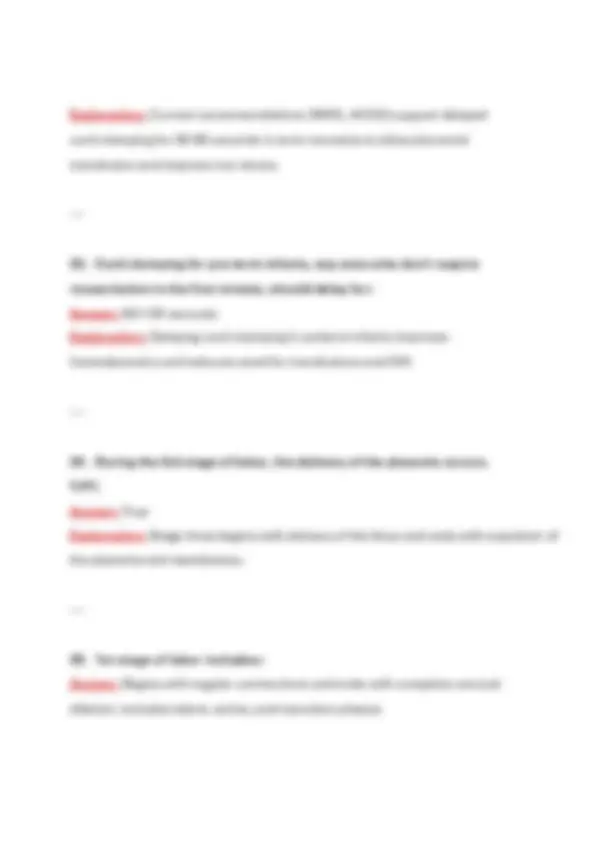
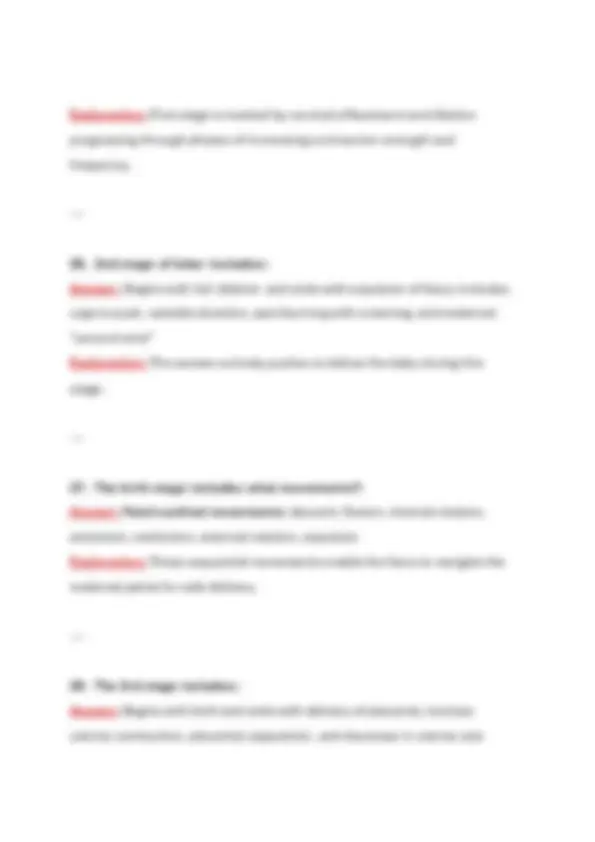
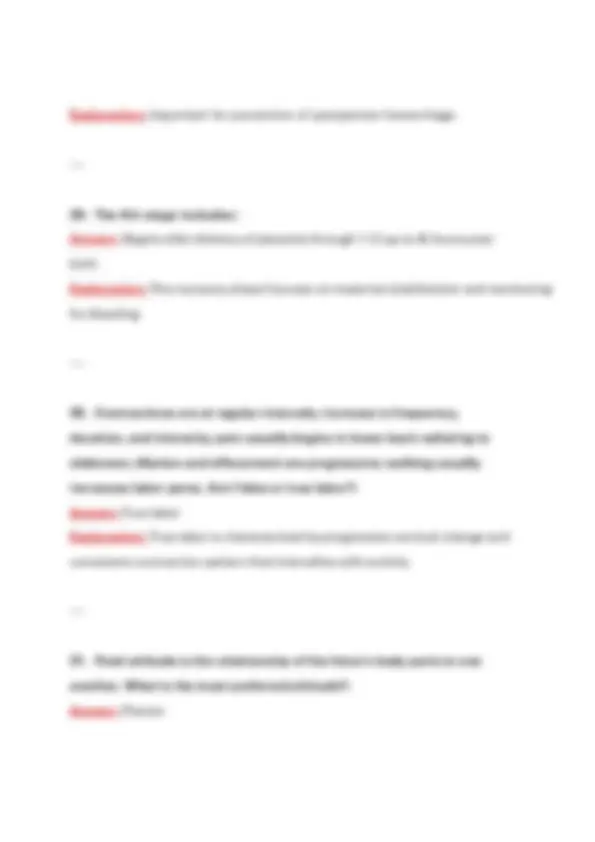
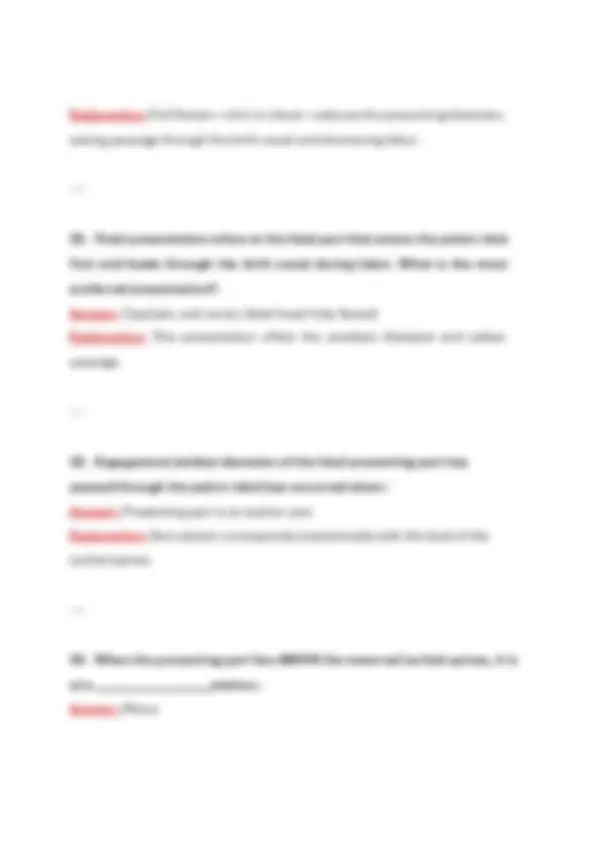
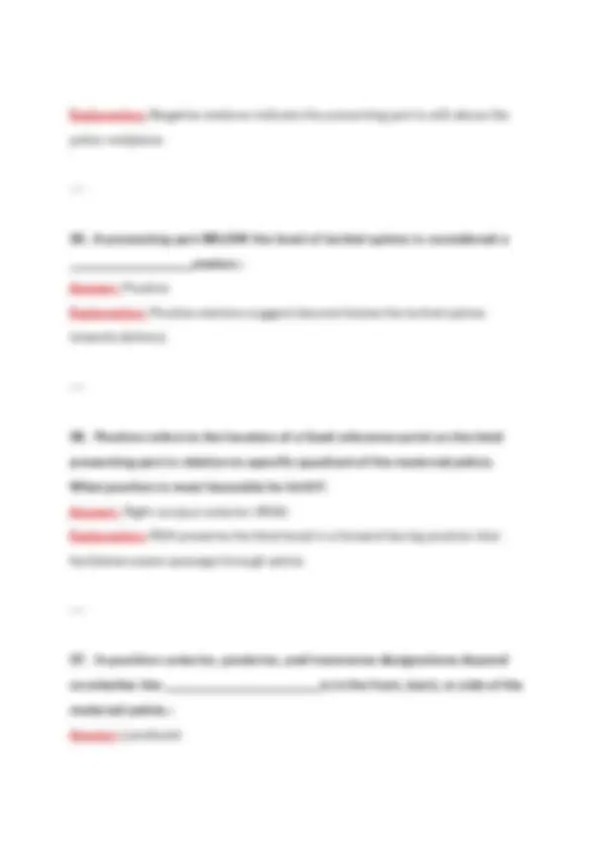

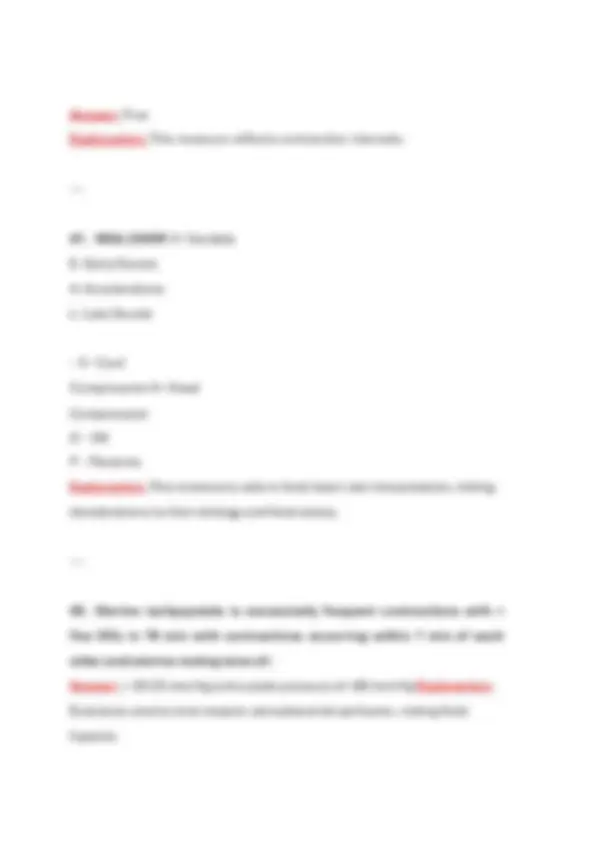
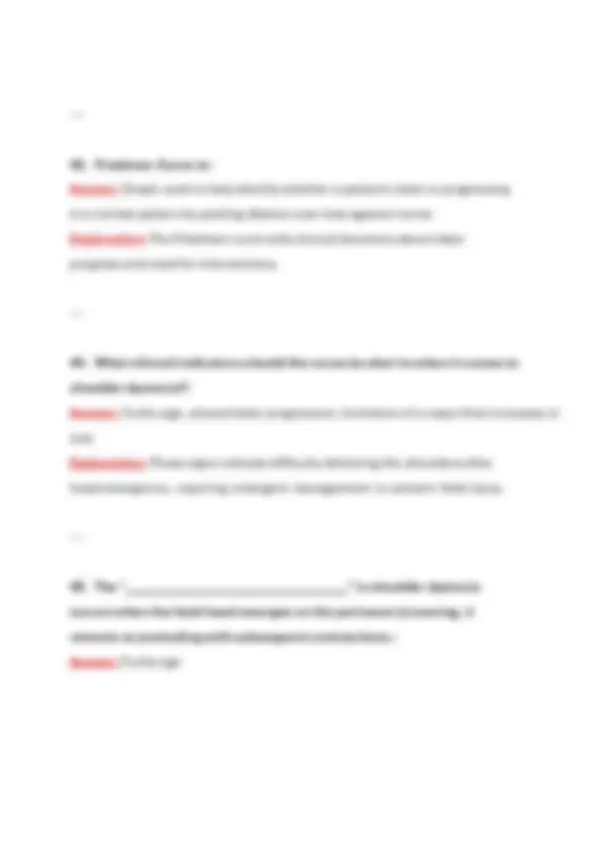
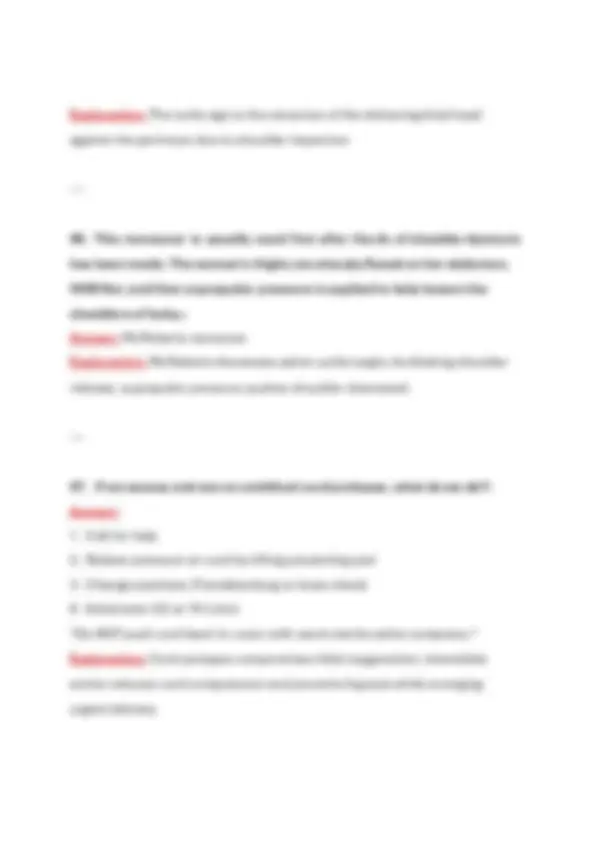
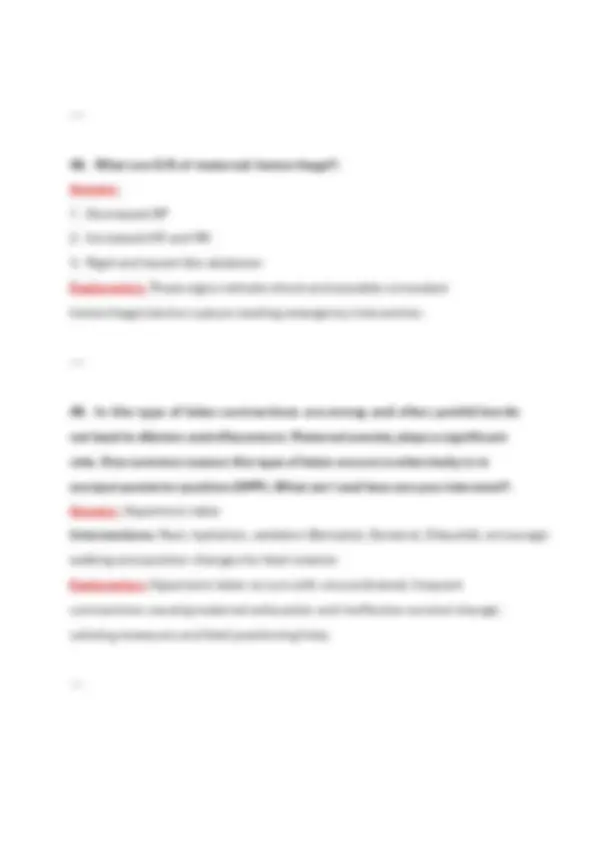
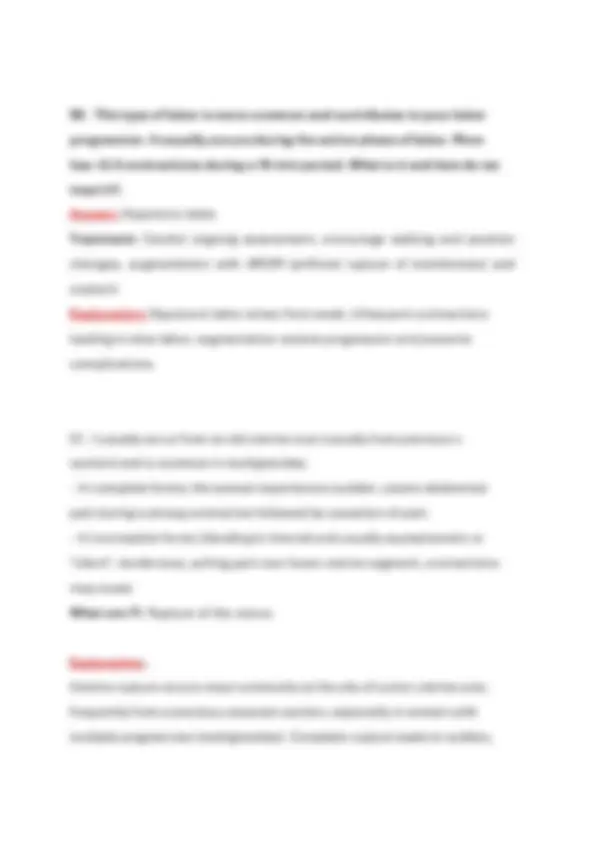
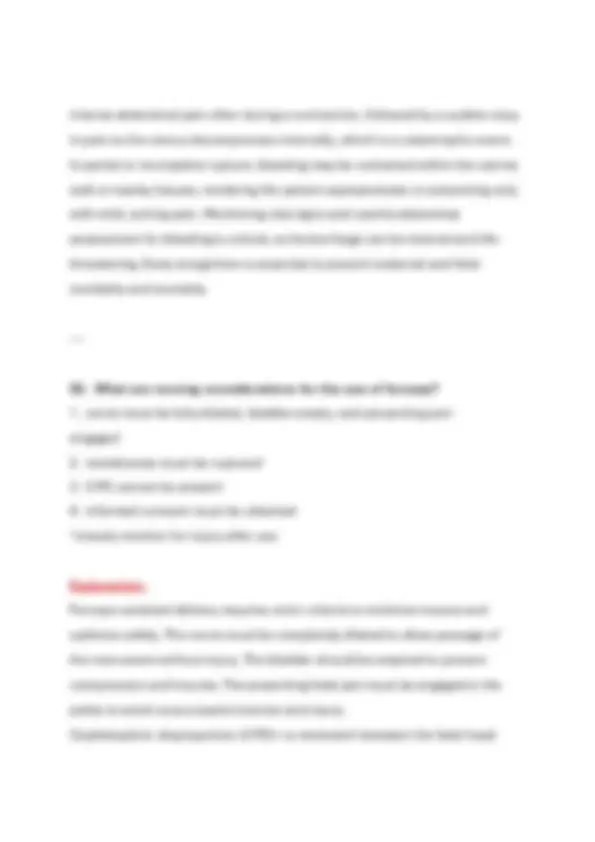
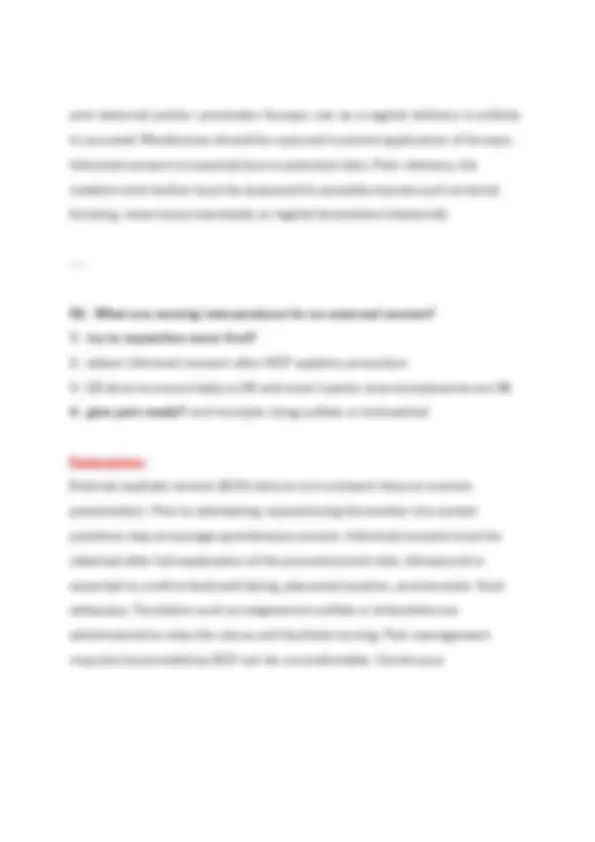
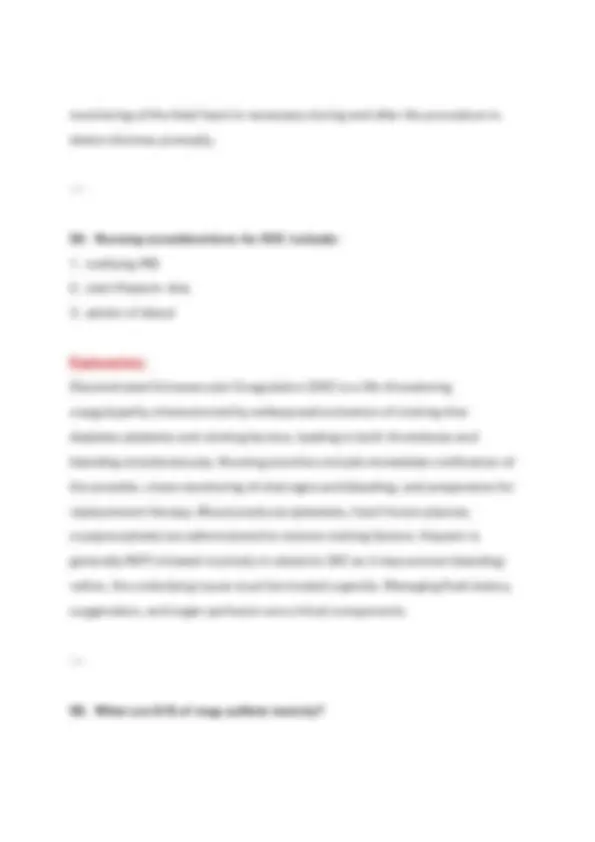
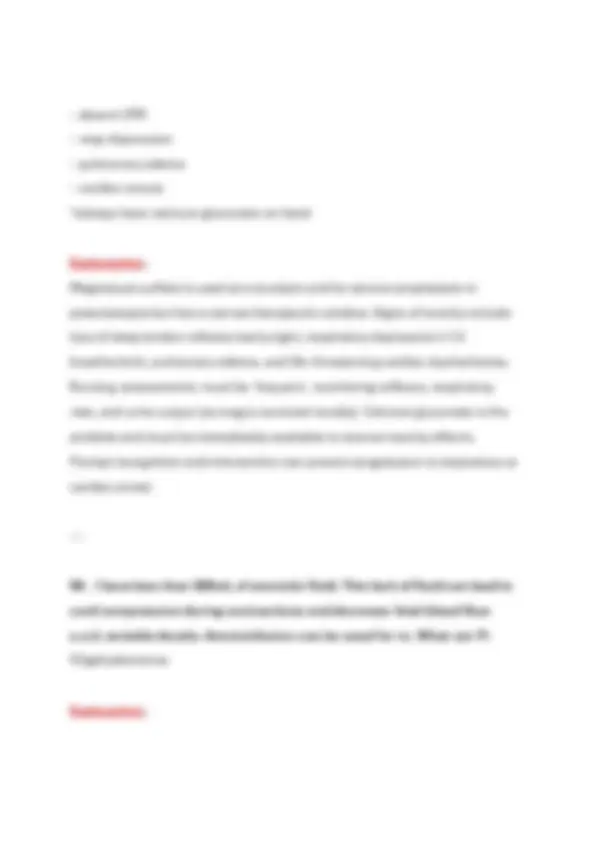
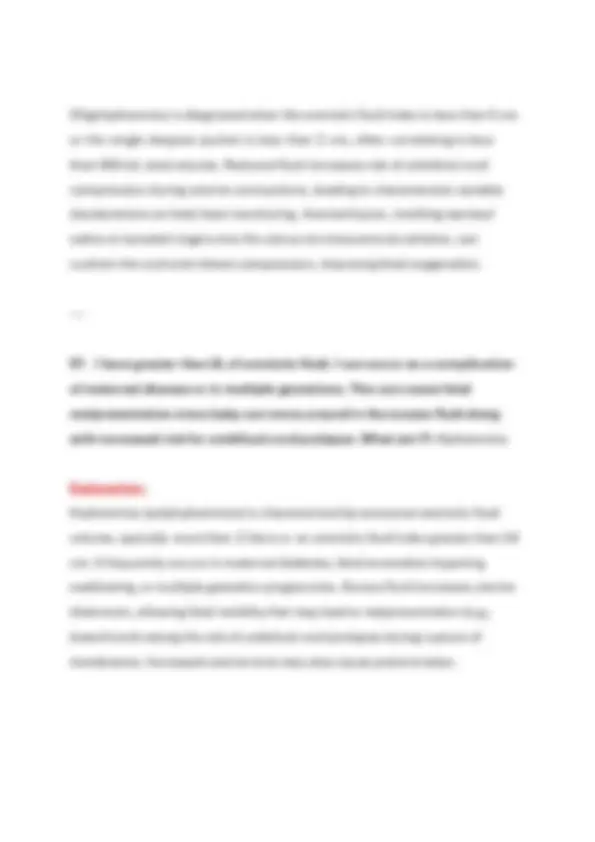
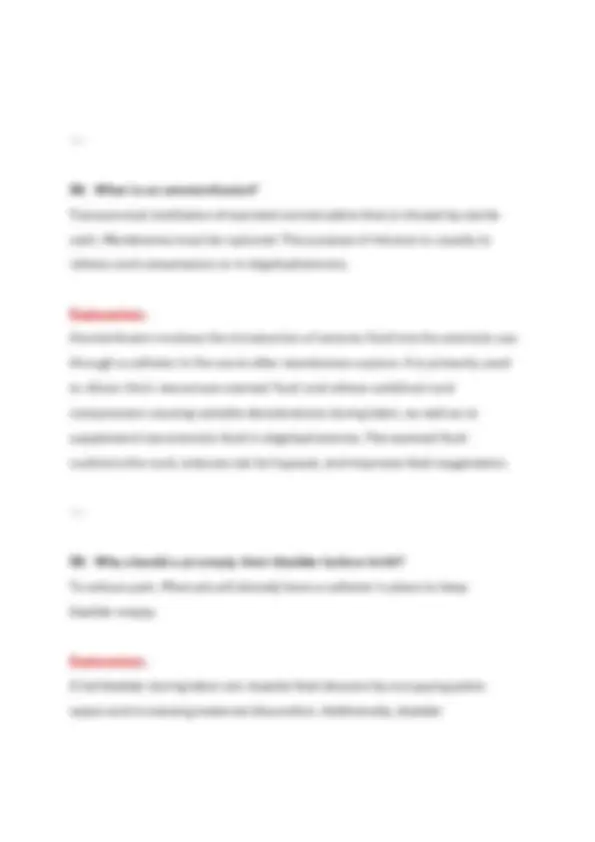
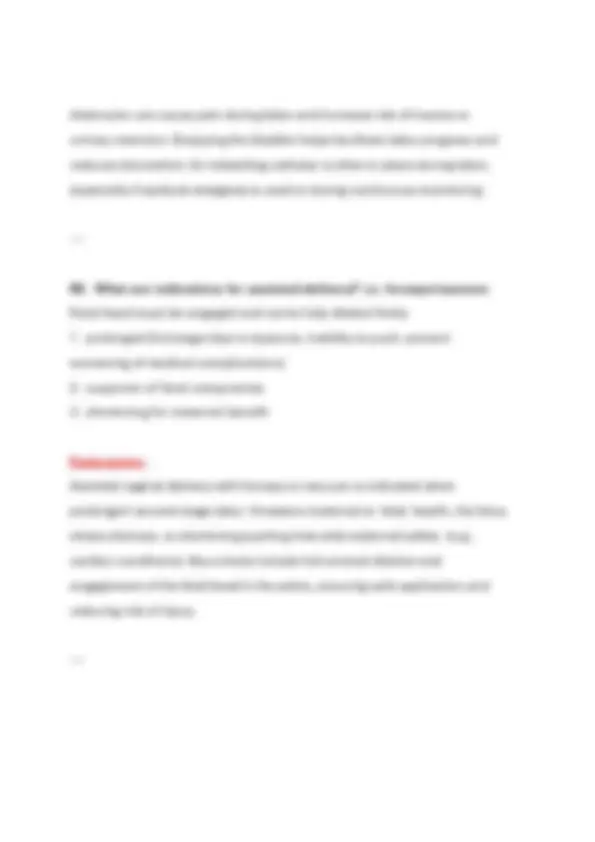
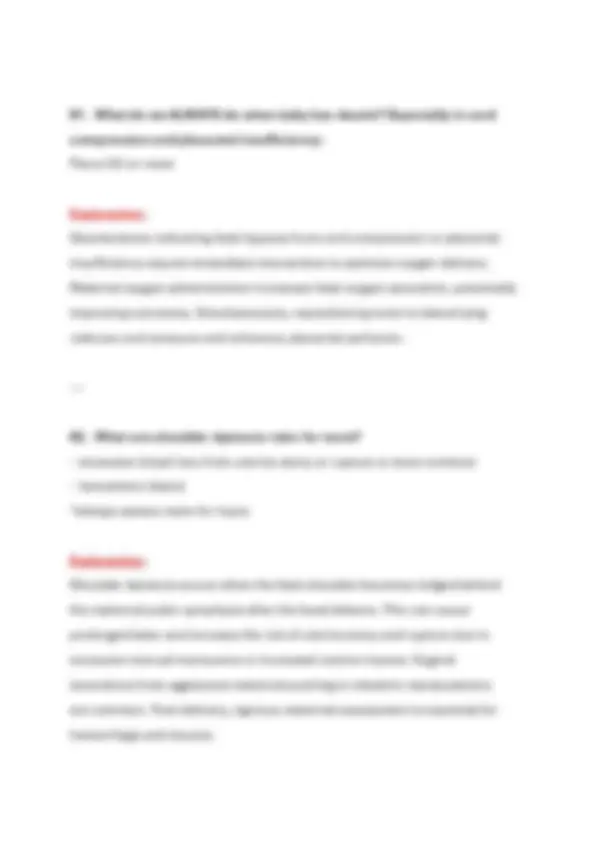
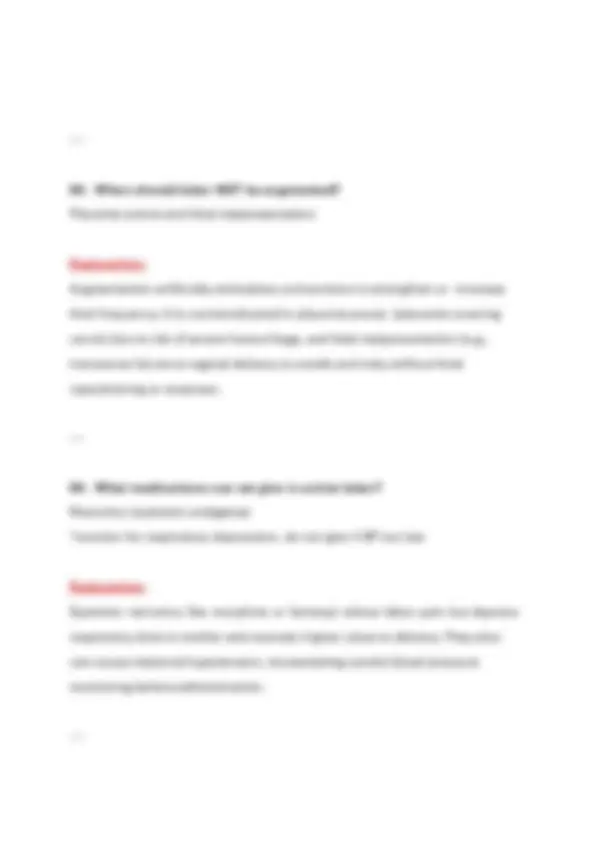
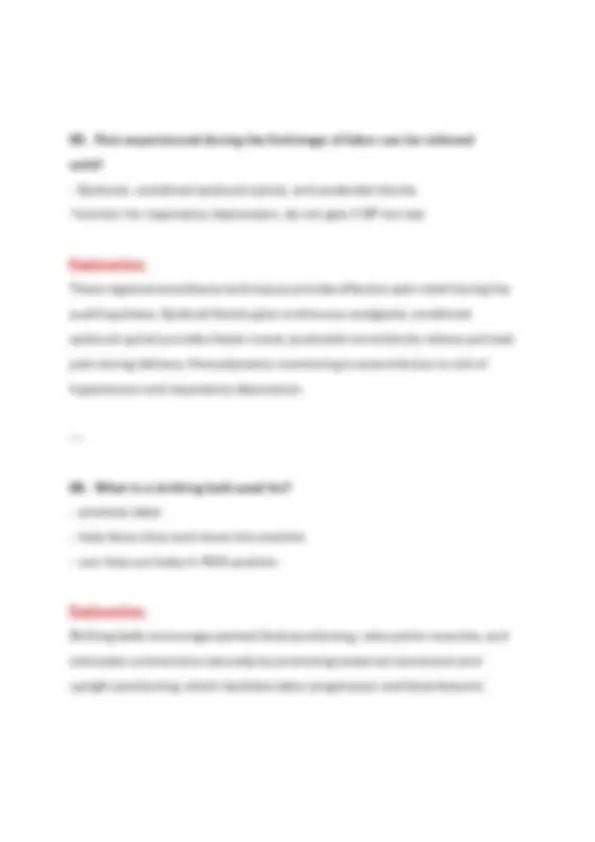
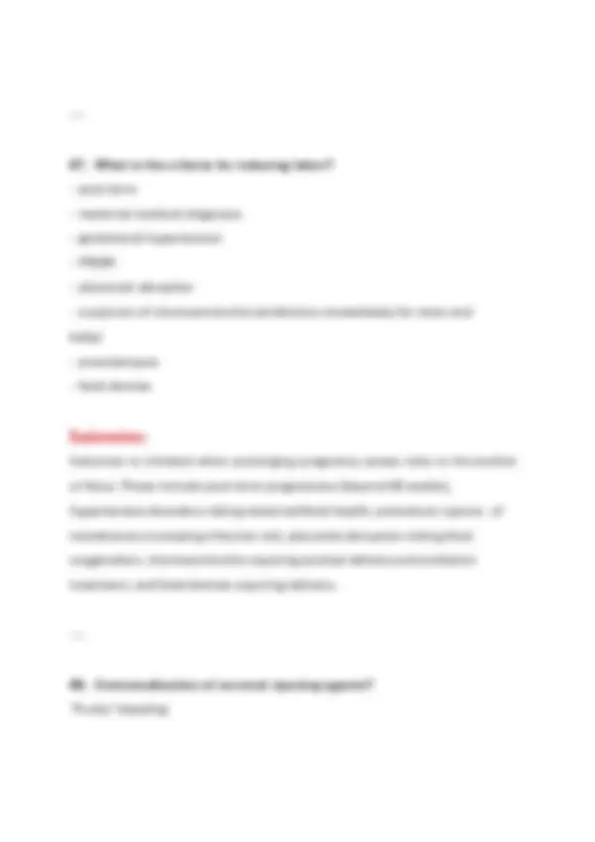
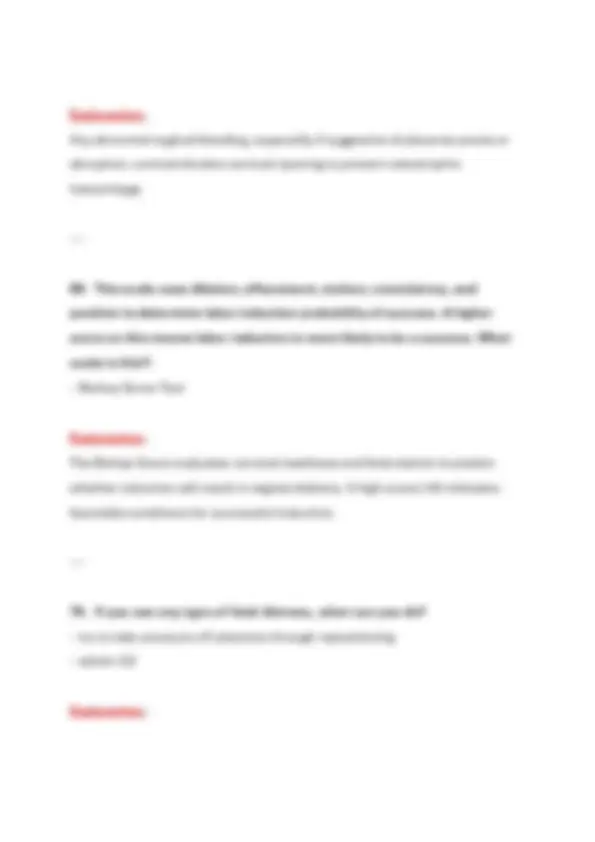
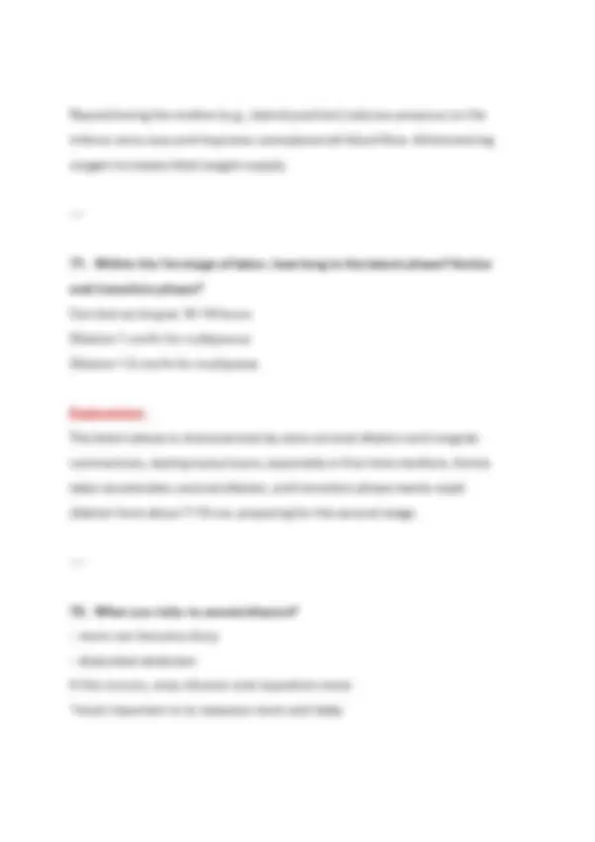
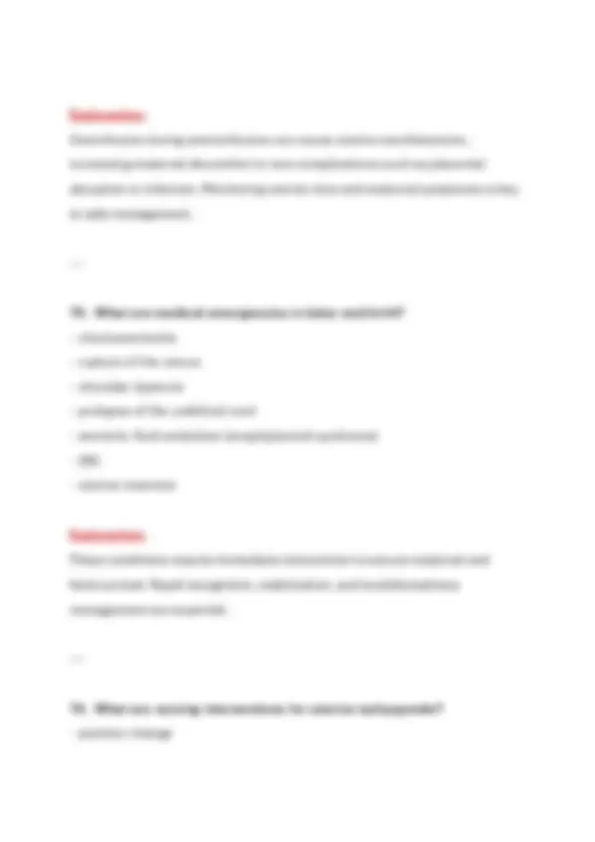
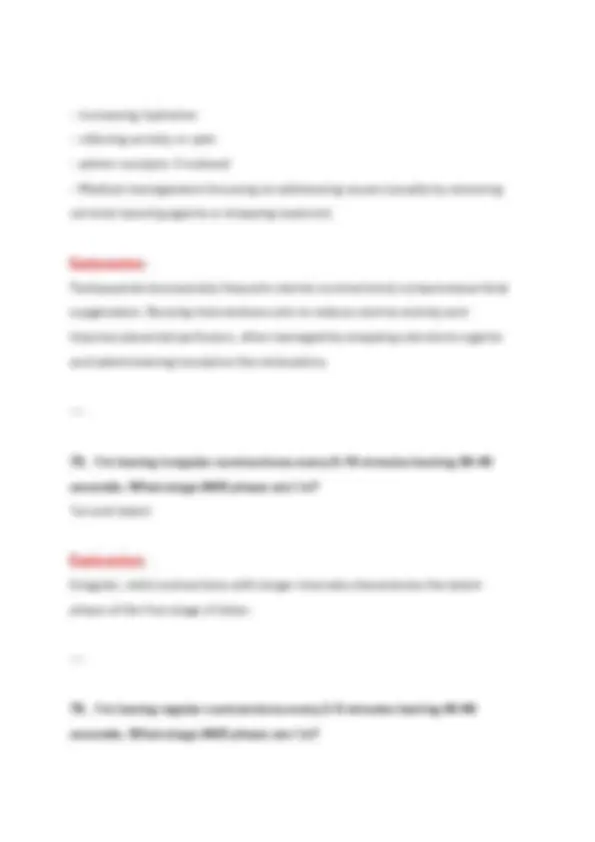
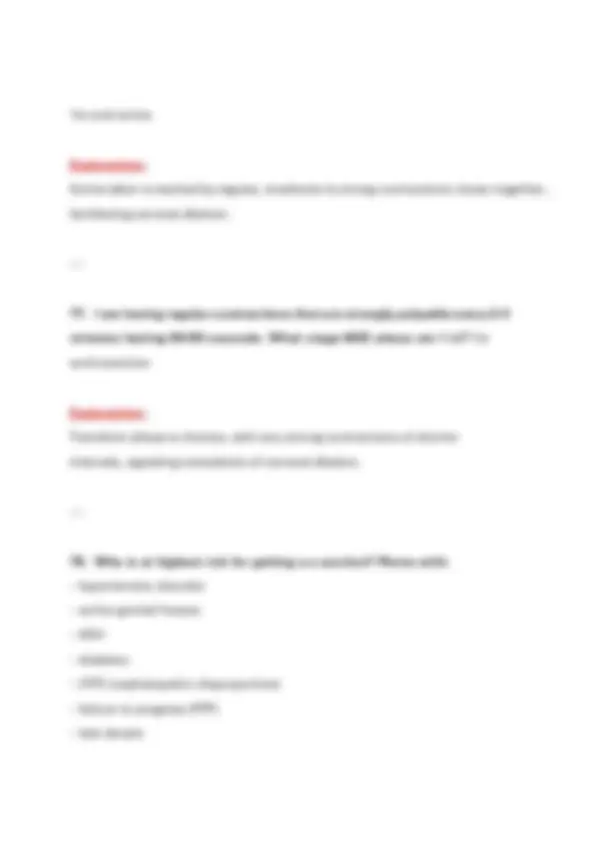
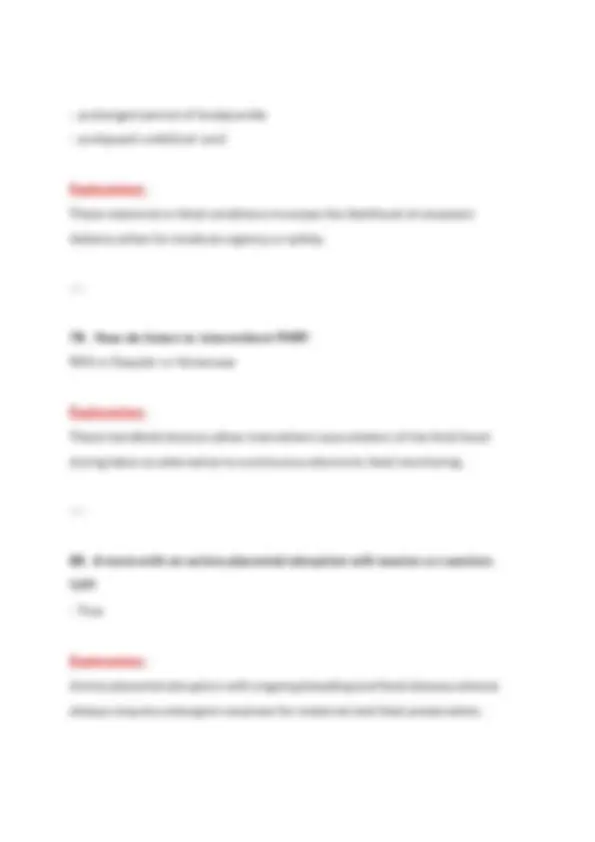
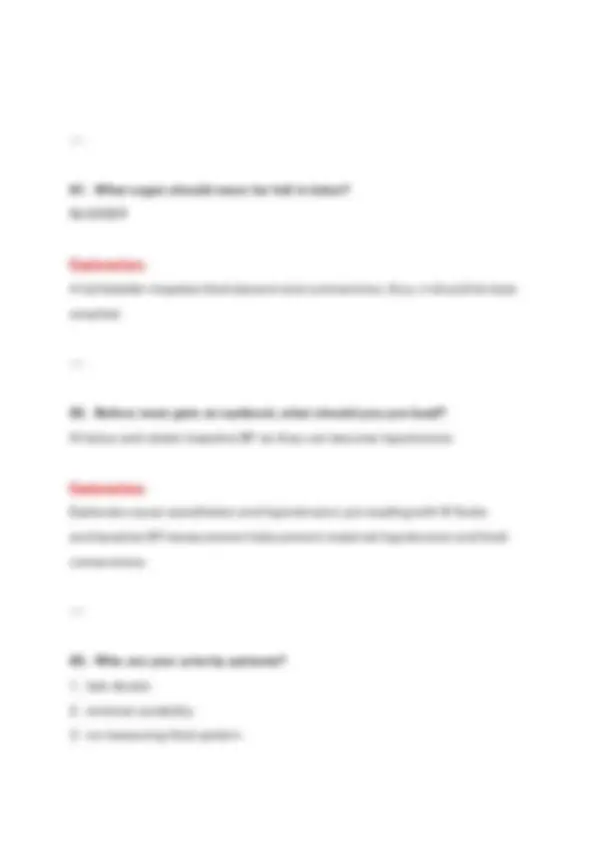
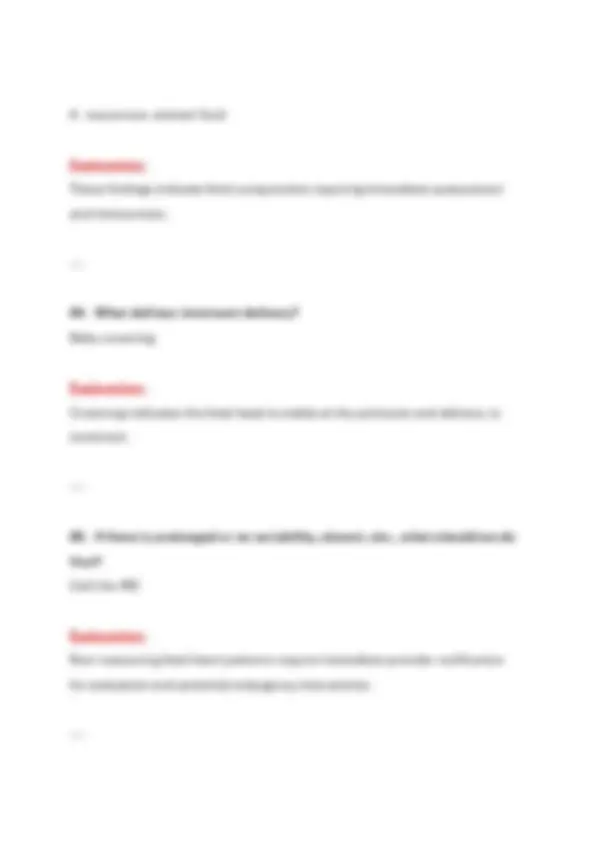

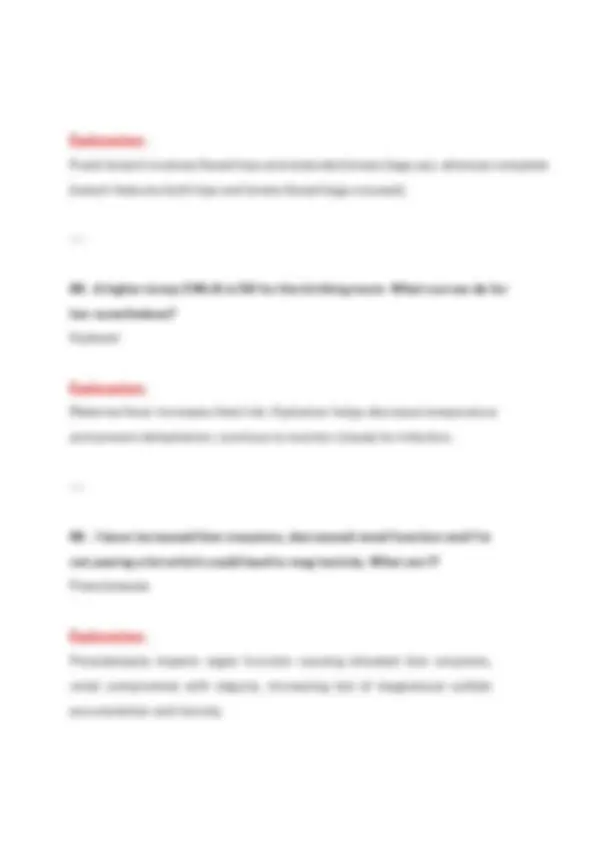

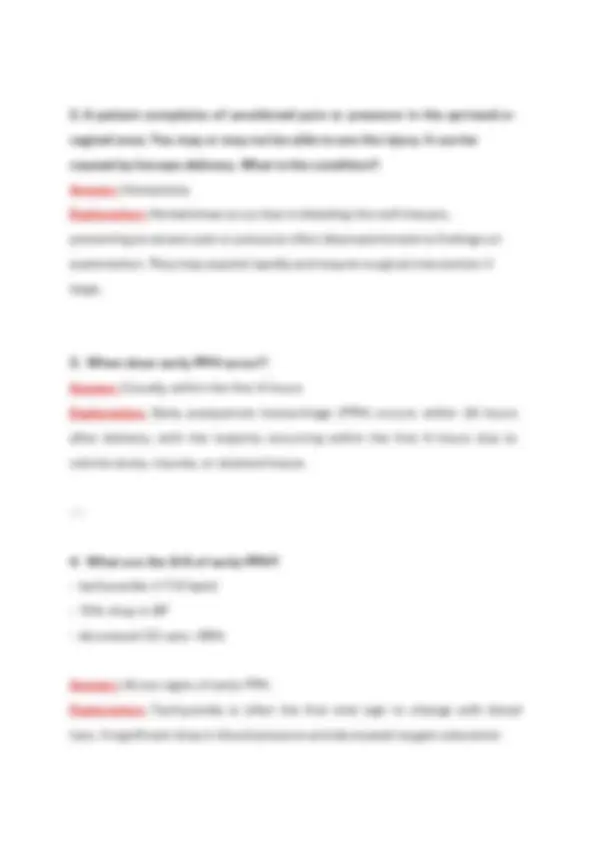

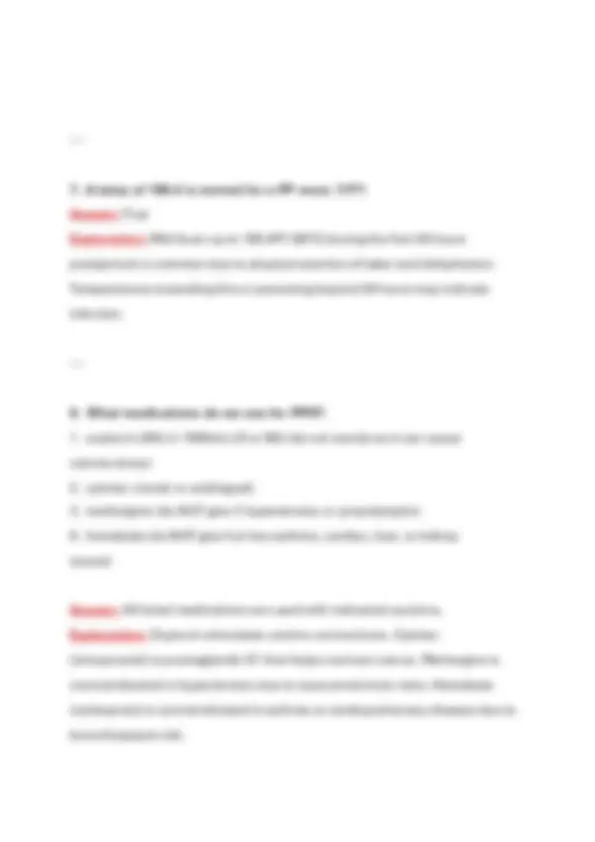
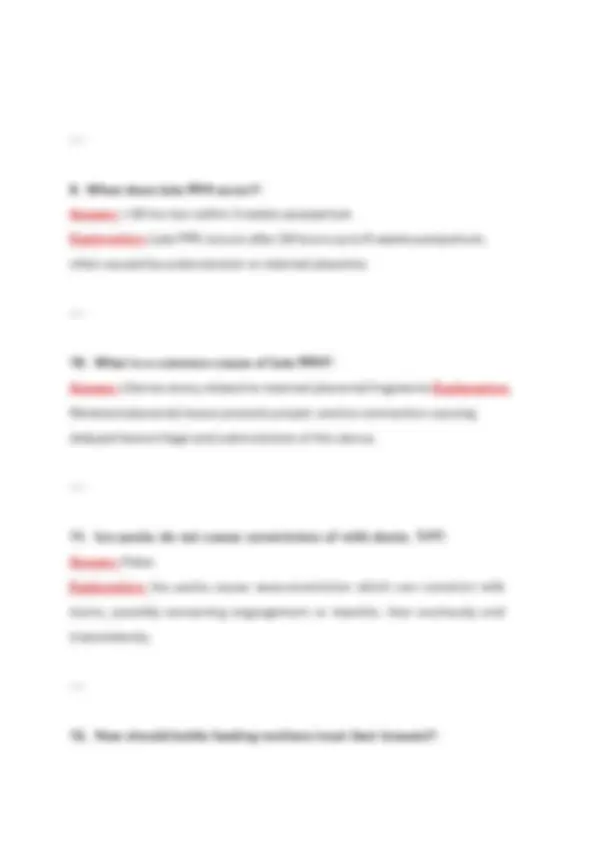

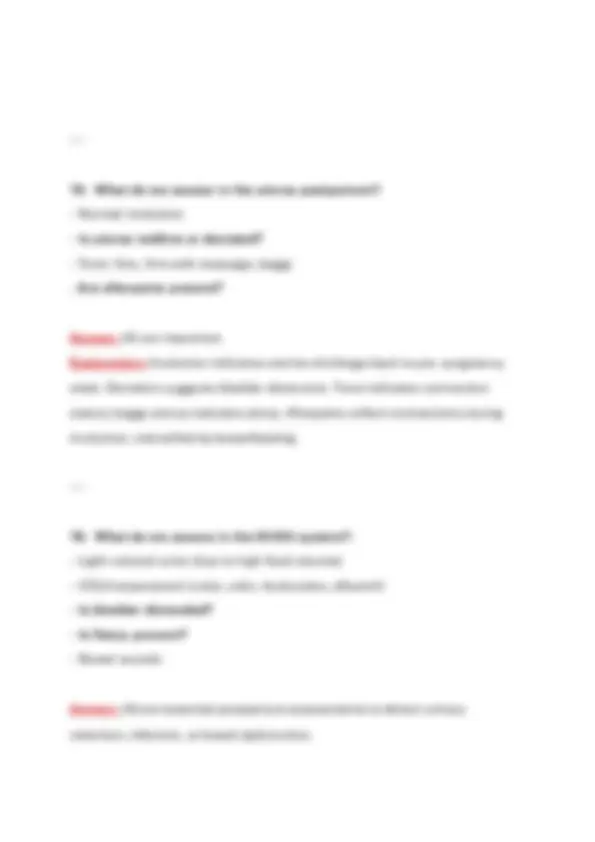
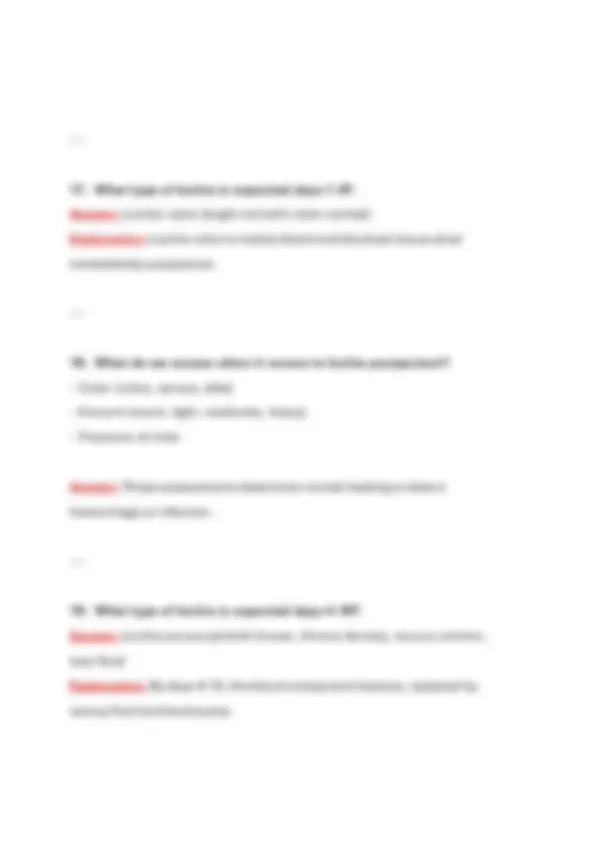
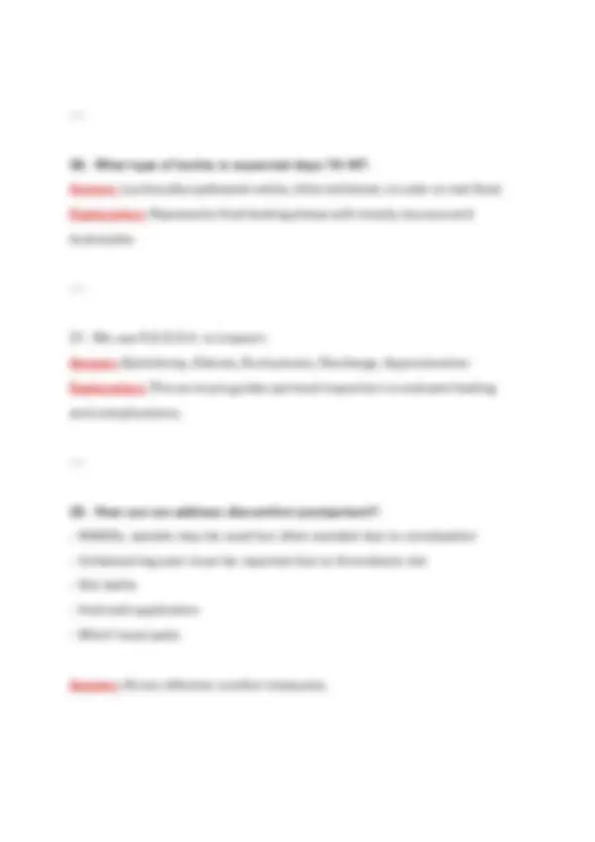
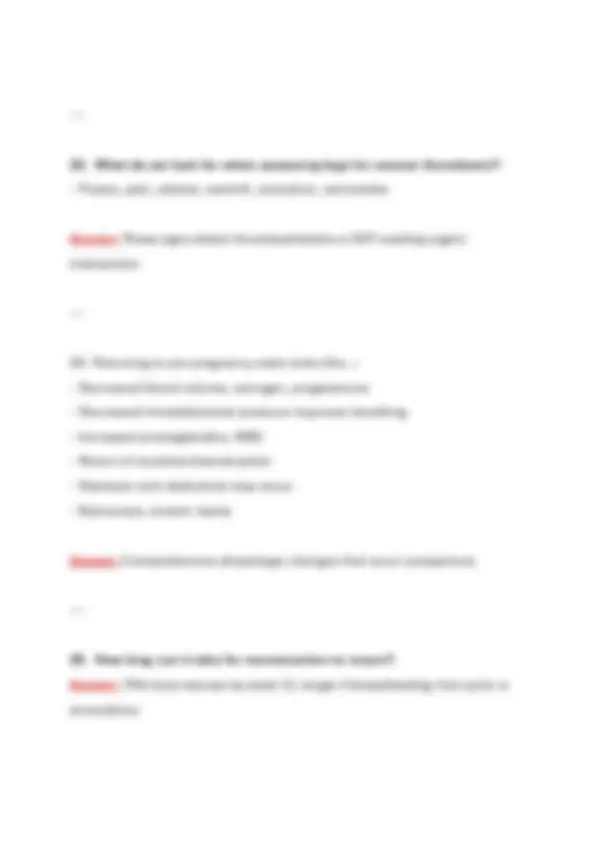
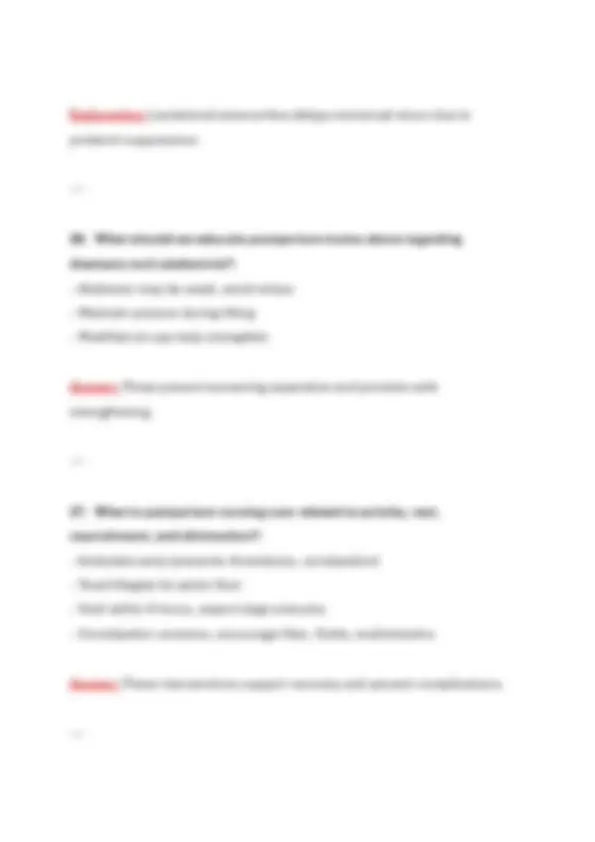
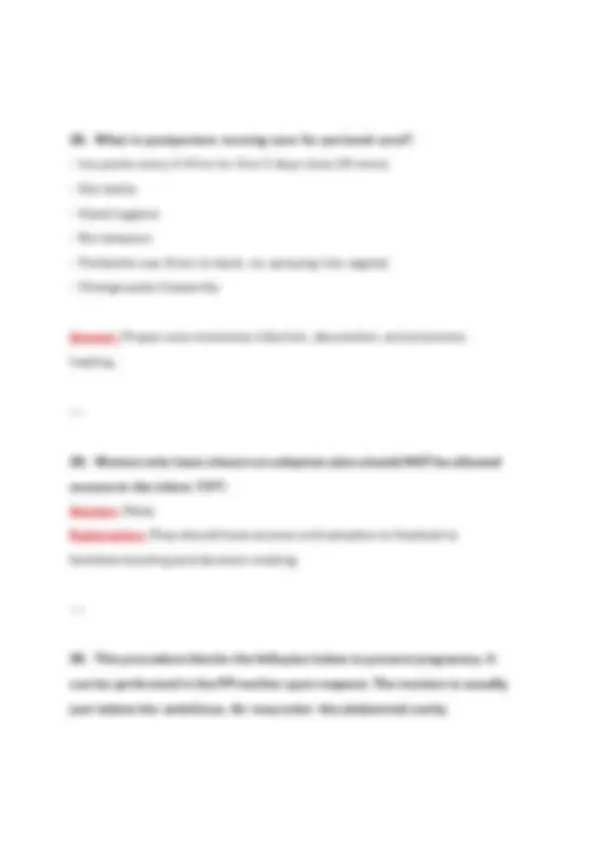
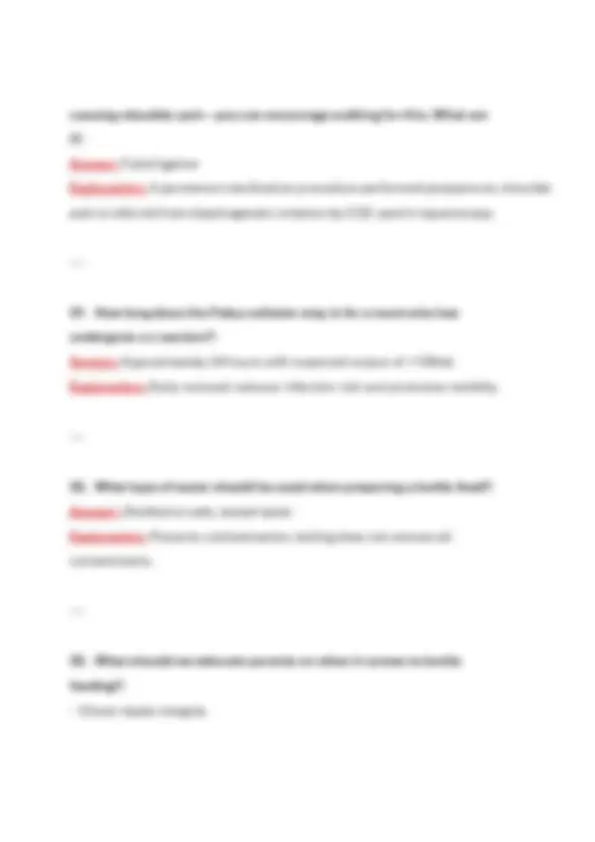
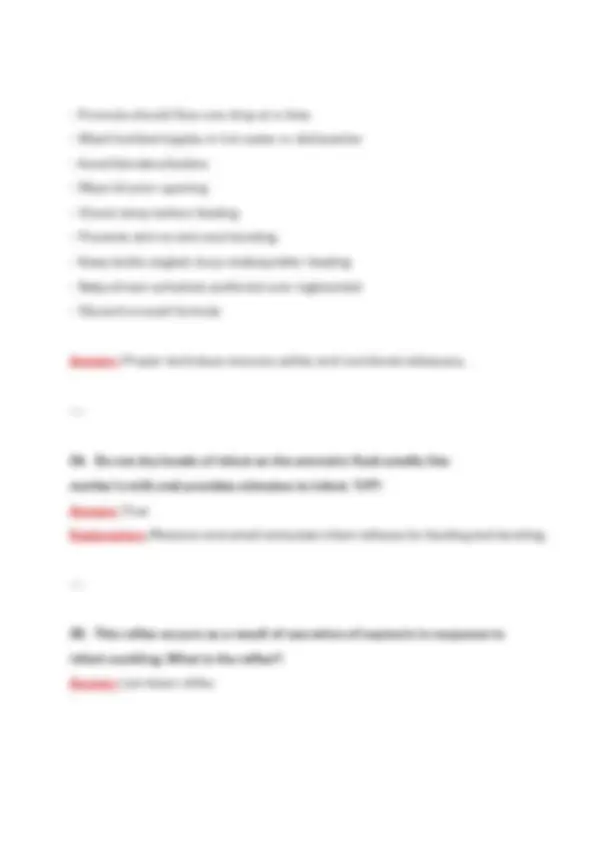
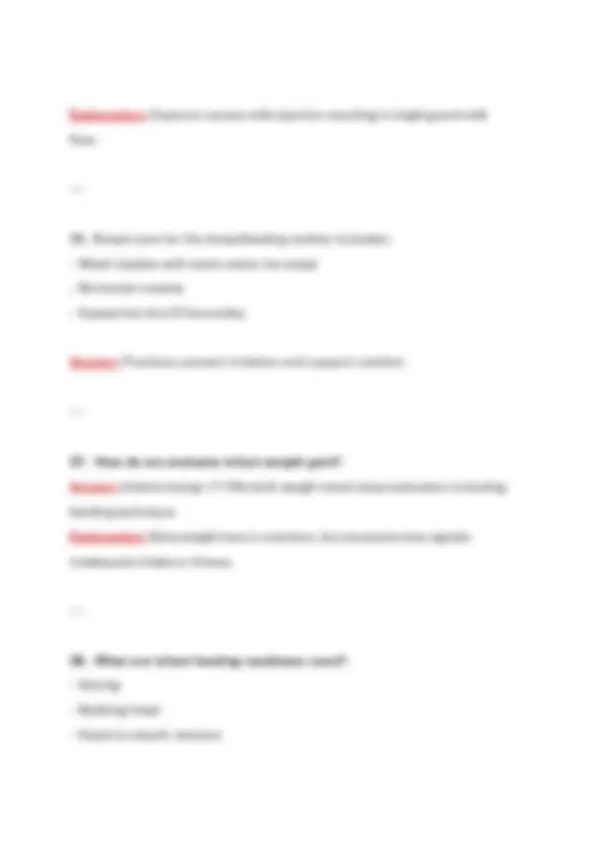


Study with the several resources on Docsity

Earn points by helping other students or get them with a premium plan


Prepare for your exams
Study with the several resources on Docsity

Earn points to download
Earn points by helping other students or get them with a premium plan
Community
Ask the community for help and clear up your study doubts
Discover the best universities in your country according to Docsity users
Free resources
Download our free guides on studying techniques, anxiety management strategies, and thesis advice from Docsity tutors
Prepare comprehensively for the NSG 3500 Exam 1 to Exam 4 with our 2025 verified Maternal Health Questions and Answers, complete with detailed explanations. Tailored specifically for Galen College nursing students, this resource covers essential maternal and newborn nursing concepts, evidence-based practices, and exam strategies to enhance your clinical knowledge and test readiness. Ideal for mastering maternal health topics and excelling in your nursing studies. NSG 3500 exam, maternal health exam, Galen College nursing, maternal newborn nursing, verified Q&A, nursing exam questions, 2025 nursing exam, nursing test preparation, maternal health study guide, nursing school resources, NSG 3500 study material, maternal health explanations
Typology: Exams
1 / 149

This page cannot be seen from the preview
Don't miss anything!





























































































➢ Galen College Of Nursing Exam 1,2,3, ➢ 100% Guarantee Pass. ➢ Each Question Includes The Correct Answer ➢ Expert-Verified explanation
1. Which hormone causes additional growth of blood vessels in the endometrium in prep for fertilized ovum and storage of nutrients? A. progesterone B. estrogen C. inhibit Answer: A Explanation: Progesterone, secreted in the luteal phase by the corpus luteum, stimulates spiral arteriole growth and endometrial gland secretion, preparing the uterine lining for implantation and nutrition of the embryo.
prevents the fetus from engaging in the ideal head-down (cephalic) position, resulting in transverse lie that complicates vaginal delivery.
5. hCG plays a role in: : Answer: limiting the maternal immune response to the pregnancy; maintains the ovarian corpus luteum (remainder of ovarian follicle after ovulation) by keeping est/prog levels elevated until placenta has developed enough to assume that function Explanation: Human chorionic gonadotropin (hCG) is secreted by syncytiotrophoblast cells of the early embryo. It prevents regression of the corpus luteum, ensuring continuous progesterone secretion to maintain the endometrium and immune tolerance to the semi-allogenic fetus.
6. The process of oogonia is dictated by which hormone? A. LH B. Estrogen C. FSH Answer: C Explanation: Follicle-stimulating hormone (FSH) promotes the growth and maturation of ovarian follicles containing oocytes (oogonia derivatives).
FSH initiates follicular recruitment and development during the menstrual cycle.
7. The term thelarche refers to: : Answer: formation of breast buds; the 1st signal that ovarian function has begun followed by growth of pubic hair Explanation: Thelarche is the onset of breast development, marking the beginning of puberty in females. It reflects the initiation of ovarian estrogen secretion, which stimulates breast tissue growth. It usually precedes pubic hair development (pubarche), indicating the early activation of the hypothalamic-pituitary-ovarian axis.
8. In perimenopause, women experience vaginal dryness and urinary changes due to: : Answer: loss of estrogen and progesterone production; ovarian follicles responsive to gonadotropins decreases and responsive follicles do not develop as quickly as before Explanation: Perimenopause is characterized by fluctuating and generally decreasing ovarian hormone levels. Estrogen deficiency leads to atrophy of the vaginal mucosa, decreased lubrication, and changes in urinary tract mucosa contributing to dryness, irritation, and urinary symptoms.
Explanation: Hormone therapy (HT) has risks, so non-hormonal alternatives such as selective serotonin reuptake inhibitors and lifestyle interventions are commonly used to manage menopausal symptoms safely.
12. Cervical mucus changes significantly before ovulation. This is to help sperm move through and locate ovum. This is due to which increases in which hormone?: Answer: Estrogen Explanation: Estrogen increases prior to ovulation promote production of thin, watery, and alkaline cervical mucus favorable for sperm motility and survival, facilitating transit to the fallopian tubes.
13. Hormones released by the are termed "releasing factors" since they stimulate the release of other hormones.: Answer: hypothalamus Explanation: The hypothalamus secretes releasing and inhibiting factors (e.g., GnRH) that regulate anterior pituitary hormone secretion, controlling reproductive hormone cascades.
14. GnRH (gonadotropin-releasing hormone) from hypothalamus: Answer:
15. Gonadotropins (gonad stimulating hormones) from pituitary: Answer:
16. Oxytocin from pituitary: Answer:
19. The secretory (days 15 - 26) and ischemic (days 27 - 28) phases of the uterine cycle are part of the: : Answer: luteal phase in the hormone cycle Explanation: The luteal phase follows ovulation, dominated by progesterone effects; ischemic phase leads to menstruation if fertilization does not occur.
20. The normal fetal heart rate is: A. 100 - 120 bpm B. 140 - 160 bpm C. 110 - 160 bpm D. 90 - 150 bpm Answer: C Explanation: Fetal heart rate normally ranges 110 - 160 beats per minute, with variability indicating fetal well-being.
21. If a slower fetal HR is detected, what should you do?: Answer:
22. Hgb levels in pregnancy women: Answer: >11g/dL per Galen (11- 12 is the mean acceptable amount)(12- 16 is norm pre-pregnancy) Explanation: Due to pregnancy hemodilution (physiologic anemia), a hemoglobin below 11g/dL is considered anemia.
23. HCT levels in pregnancy: Answer: >33% (decreases from 37 - 47% in pre-pregnancy) Explanation: Hematocrit drops due to plasma volume expansion exceeding red cell mass increase.
24. An increase in BV of 40 - 50% peaks at term, primarily caused by an in erythrocytes and plasma during pregnancy: Answer: increase
Explanation: Intimate partner violence risk rises in pregnancy, requiring vigilance and screening during prenatal care.
28. For anxious pregnant patients, make a schedule and: : Answer: go to prenatal appts Explanation: Structured care visits provide reassurance, monitoring, and education reducing anxiety.
29. Prenatal appt schedule: 1st trimester - 28/32 weeks: Answer: monthly appts Explanation: Routine monthly visits monitor maternal/fetal health early in pregnancy.
30. Prenatal appt schedule: 28/32 weeks - 36 weeks: Answer: every 2 weeks Explanation: Increasing visit frequency reflects rising risks and need for closer fetal surveillance.
31. Prenatal appt schedule: 36 weeks - delivery: Answer: weekly Explanation: Weekly visits enable timely detection of late pregnancy complications and labor preparation.
32. The goal of the first prenatal visit: : Answer: to explain purpose of prenatal care and to establish specific goals Explanation: The initial visit sets the foundation for care, assessing baseline health, risk factors, and maternal education.
33. The Naegle rule: : Answer: add 7 days, then subtract 3 mos from the date of the pt's first day of their last menstrual period Explanation: Classic method to estimate due date based on LMP.
34. What is gravida?: Answer: # of pregnancies including current pregnancy Explanation: Gravidity counts all pregnancies regardless of outcome.
37. What does "term" mean?: Answer: # of term pregnancies (babies born 27 weeks or beyond usually) Explanation: Term pregnancy typically defined as 37 weeks or more; some include viability cutoff around 24 - 27 weeks depending on context.
38. What does "preterm" mean?: Answer: # of preterm deliveries (babies born week 24 - 36 wks) Explanation: Preterm birth occurs before 37 completed weeks but after viability.
39. Abortions can be both spontaneous and induced/ T/F?: Answer: True Explanation: Spontaneous abortion refers to miscarriage; induced abortion is deliberate termination.
40. If a woman has a "spontaneous abortion" at 28 wks, is it considered an abortion or stillbirth? Is it a preterm baby?: Answer: Stillbirth and it is a preterm baby
Explanation: Pregnancy loss after viability (>20- 24 weeks) is considered stillbirth, and before term is preterm.
41. Immunizations a pregnant woman can and should receive: : Answer: flu, Tdap, hep B (people close to baby should also get these vaccinations) Explanation: Inactivated vaccines protect mother and neonate from common infections without risk.
43. Syphilis is indicated by what blood marker?:
47. RDA for vitamin D is: : Answer: 600 IU Explanation: Adequate vitamin D supports calcium absorption; sources include fortified foods and sunlight.
48. RDA for iron is: : Answer: 27mg/day Explanation: Increased iron supports expanded maternal blood volume and fetal storage; deficiencies risk anemia.
49. RDA for vitamin C is: : Answer: 120mg Explanation: Vitamin C assists iron absorption and immune function. Rich in fruits/vegetables.
50. Caloric intake should be increased by what in 2nd and 3rd trimesters: : Answer: 300kcal/day (1200- 2400 calories per day based on activity level)
Explanation: Additional calories support fetal growth and maternal metabolic demands.
51. Age 35 and above is considered advanced maternal age. What chromosomal abnormalities are associated with advanced maternal age?: Answer: Trisomy 21, 18, and 13 incidences increase with age Explanation: Maternal age affects meiotic nondisjunction risk leading to chromosomal trisomies.
52. Fathers over 45 are of advanced paternal age. What conditions are associated with this?: Answer: Schizophrenia increases by 47% and autism increases by 80% Explanation: Age-related mutations in sperm DNA contribute to increased neurodevelopmental disorders in offspring.
53. DNA or karyotyping reveals three copies of the chromosome 21. What am I?: Answer: Trisomy 21 (Down syndrome)[mild-mod ID]